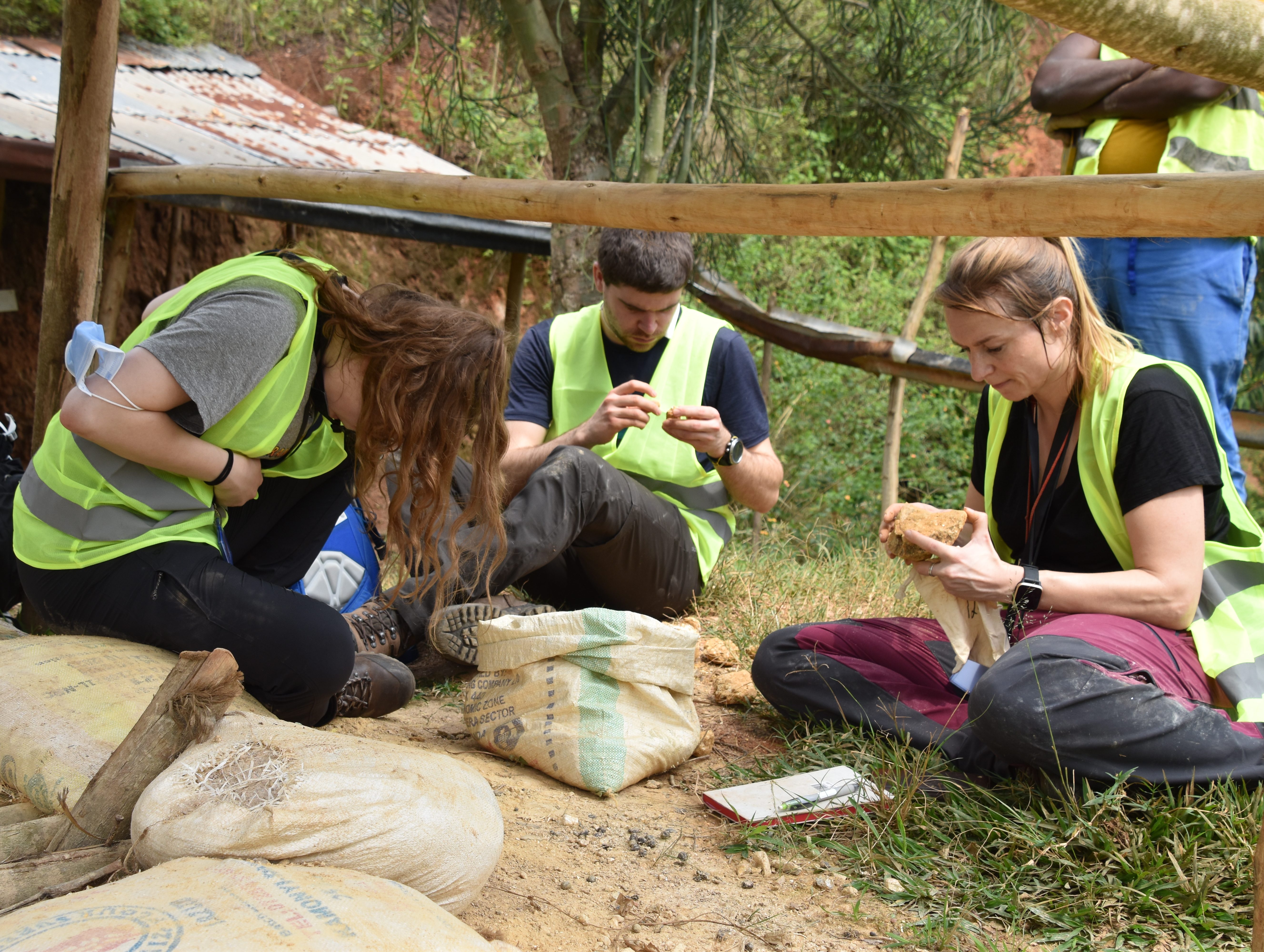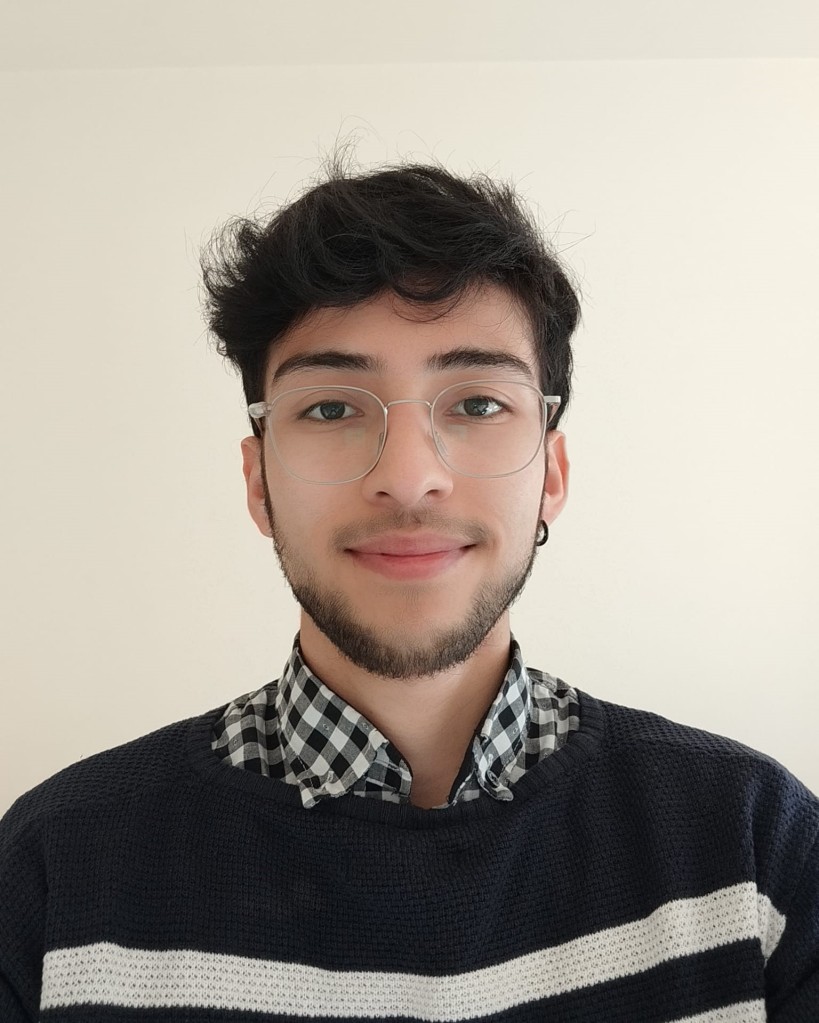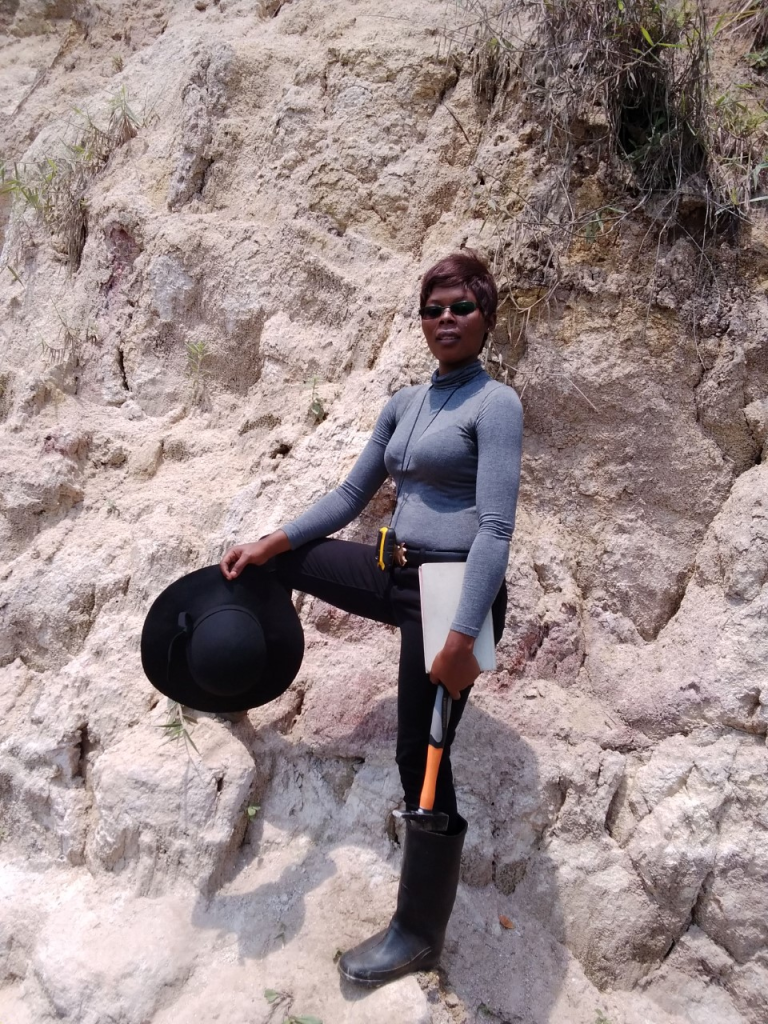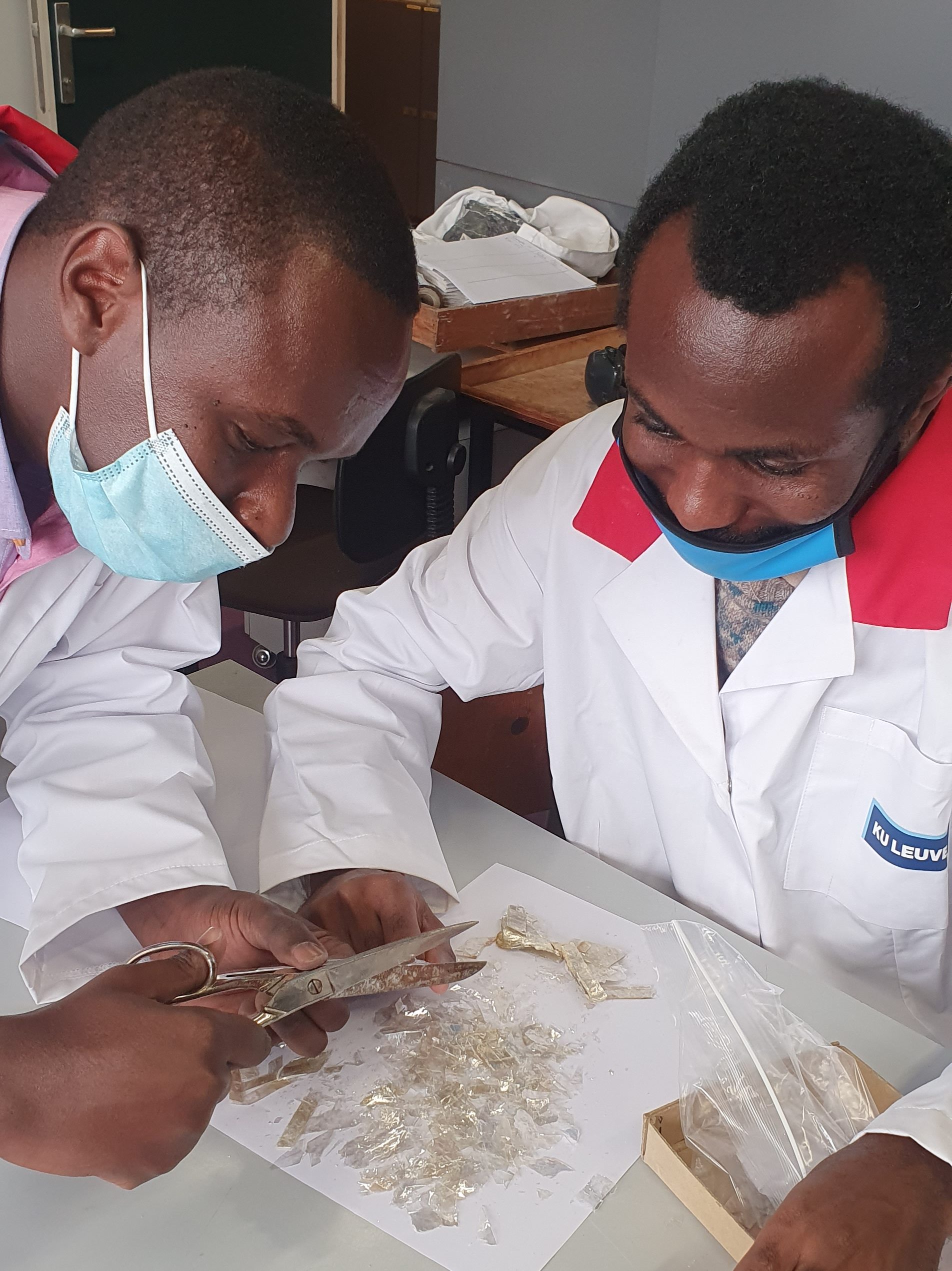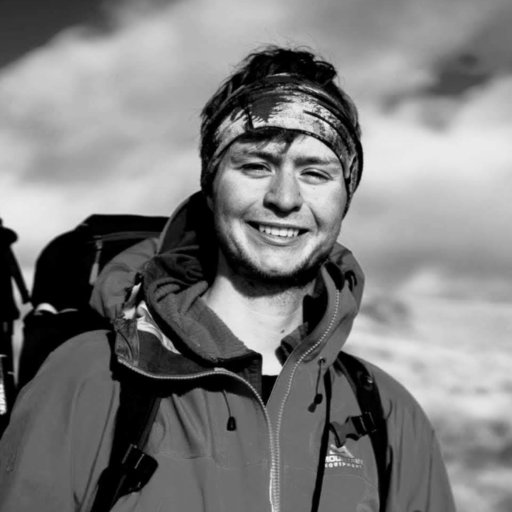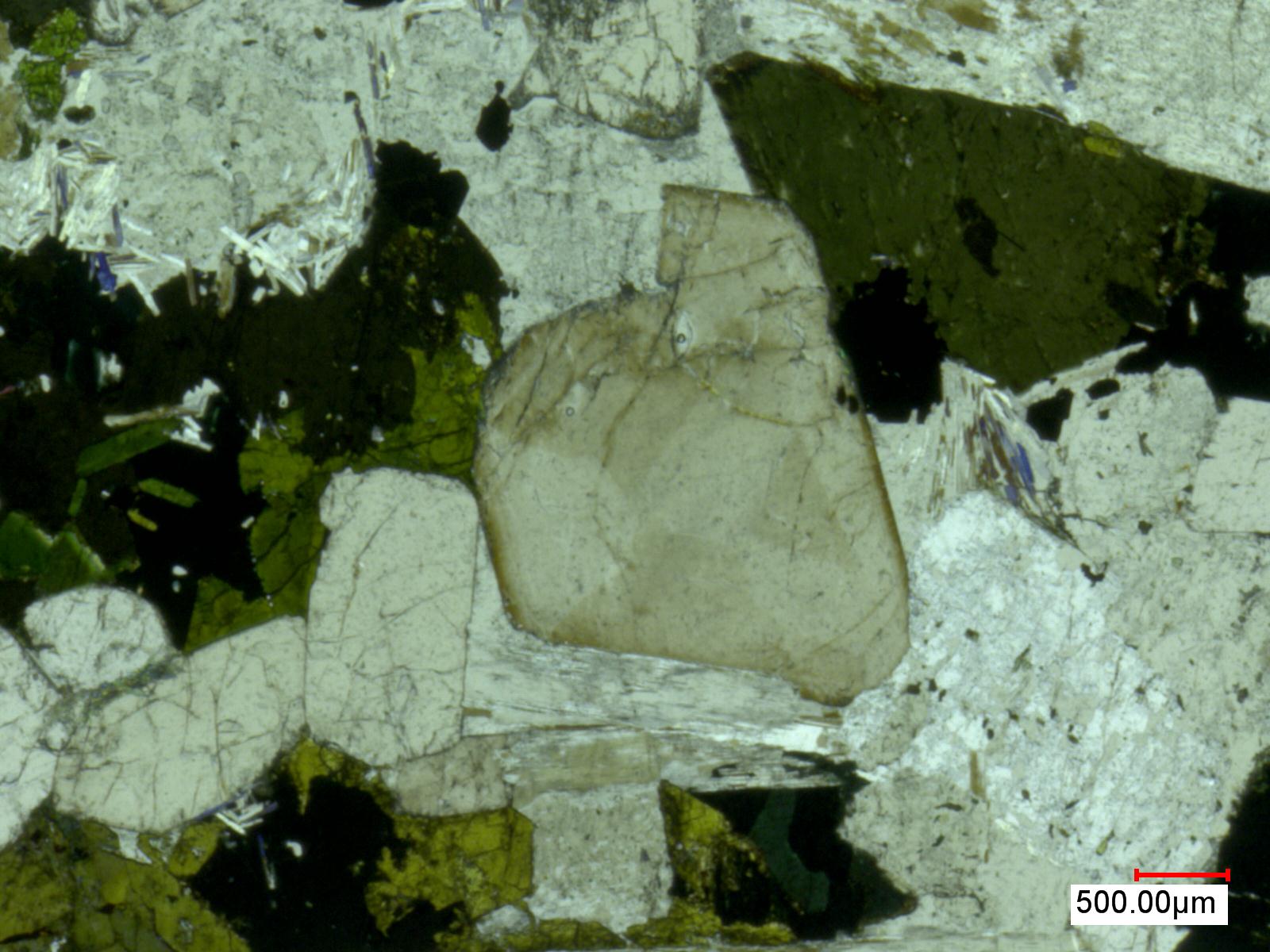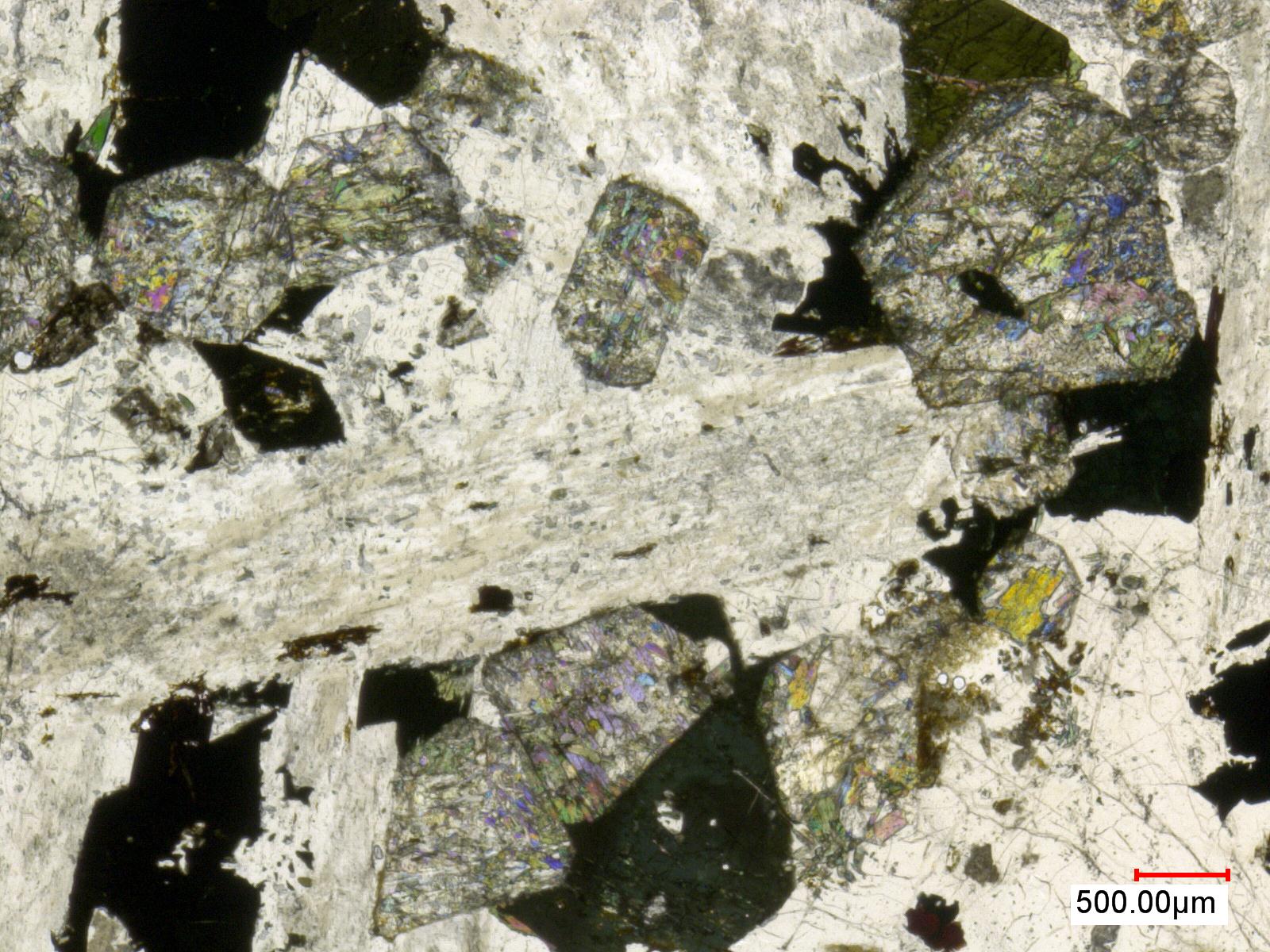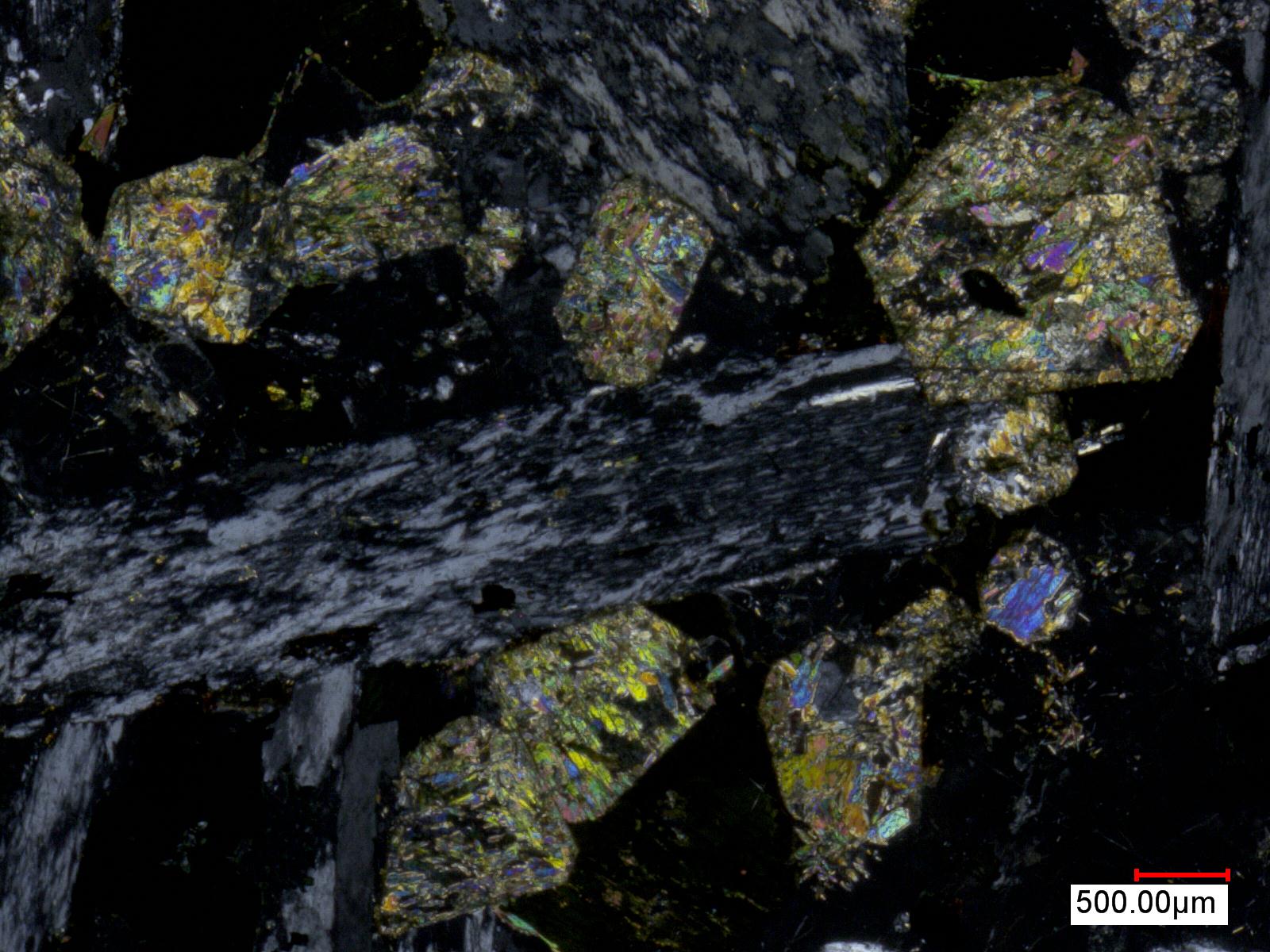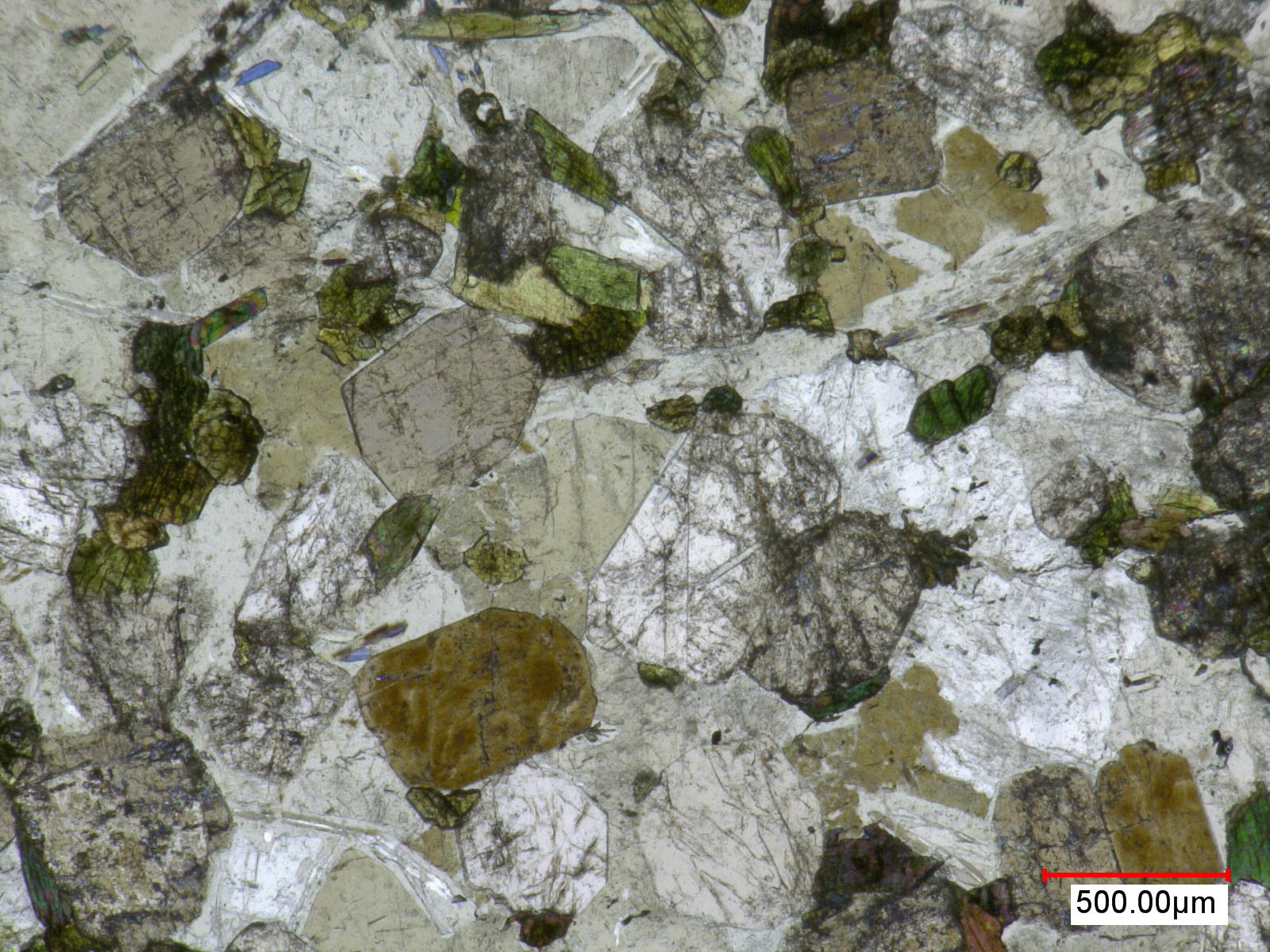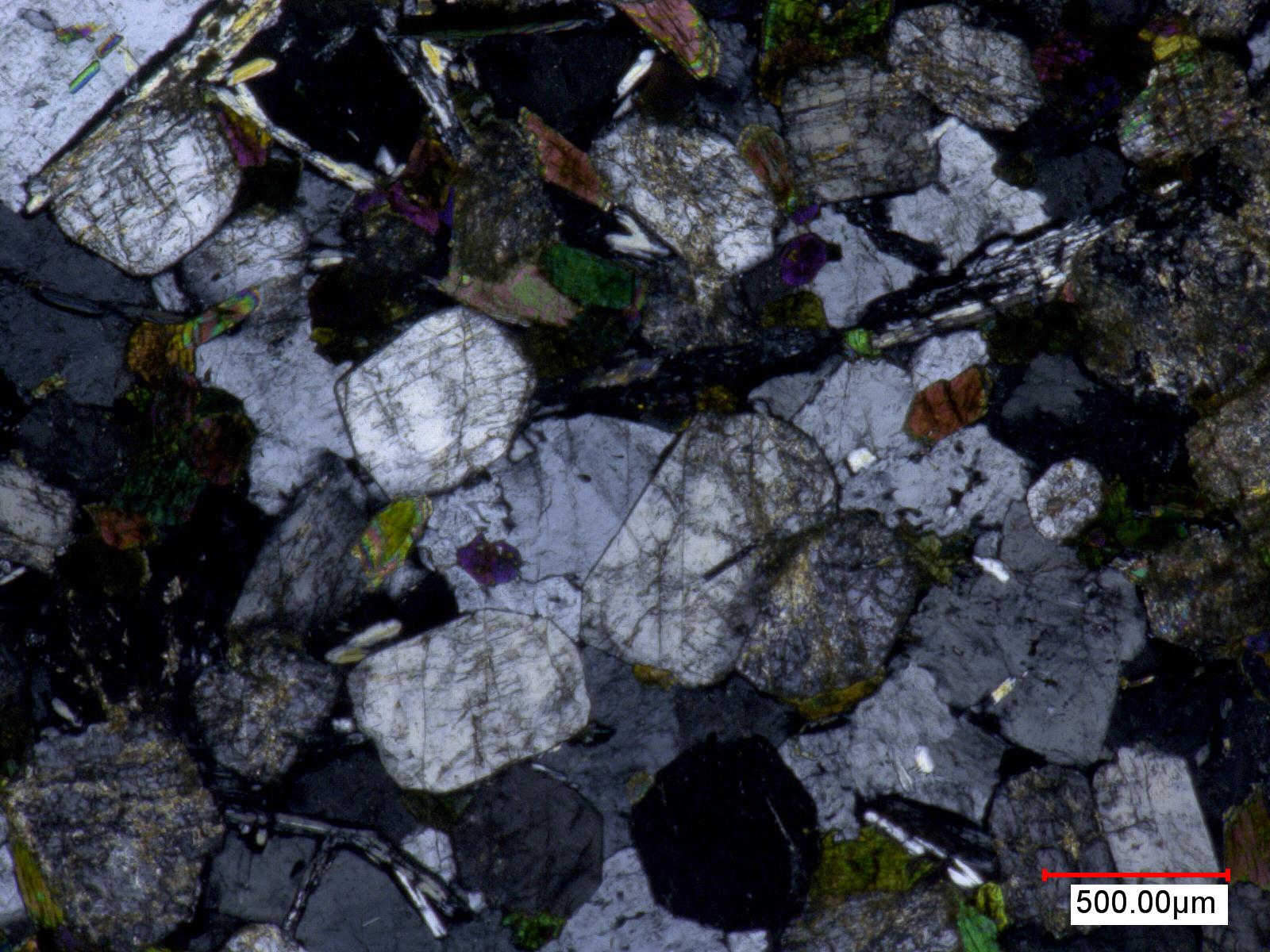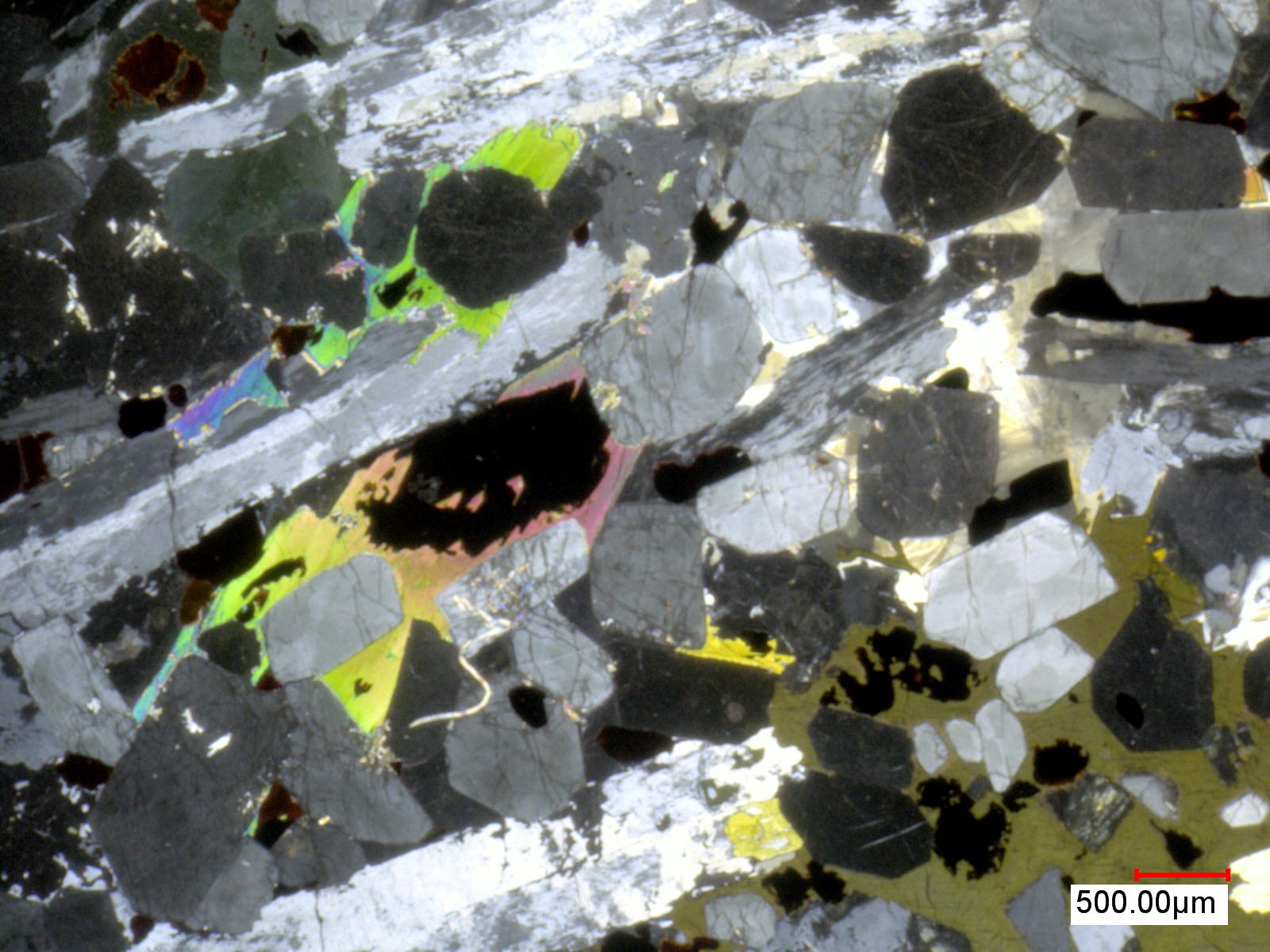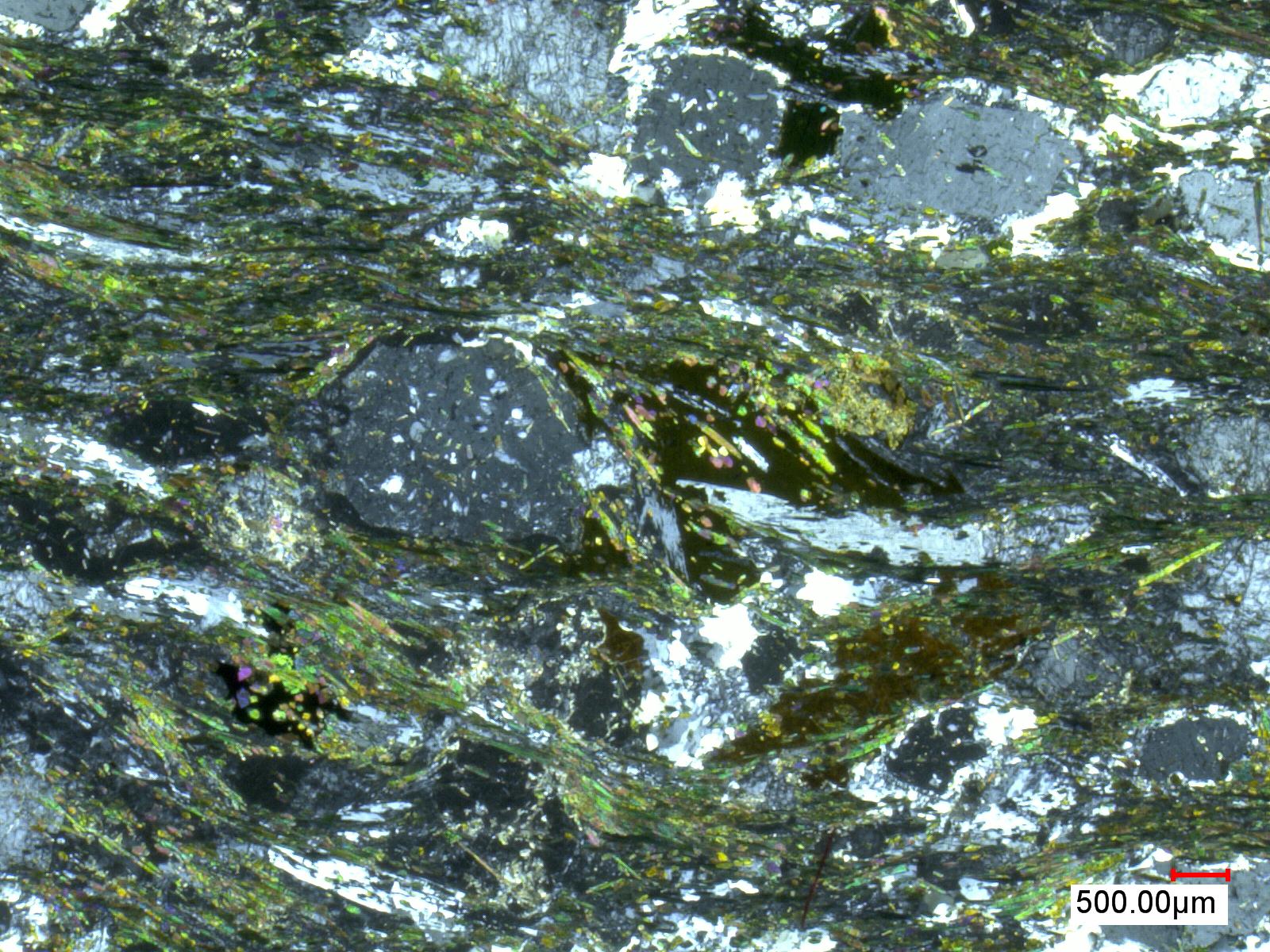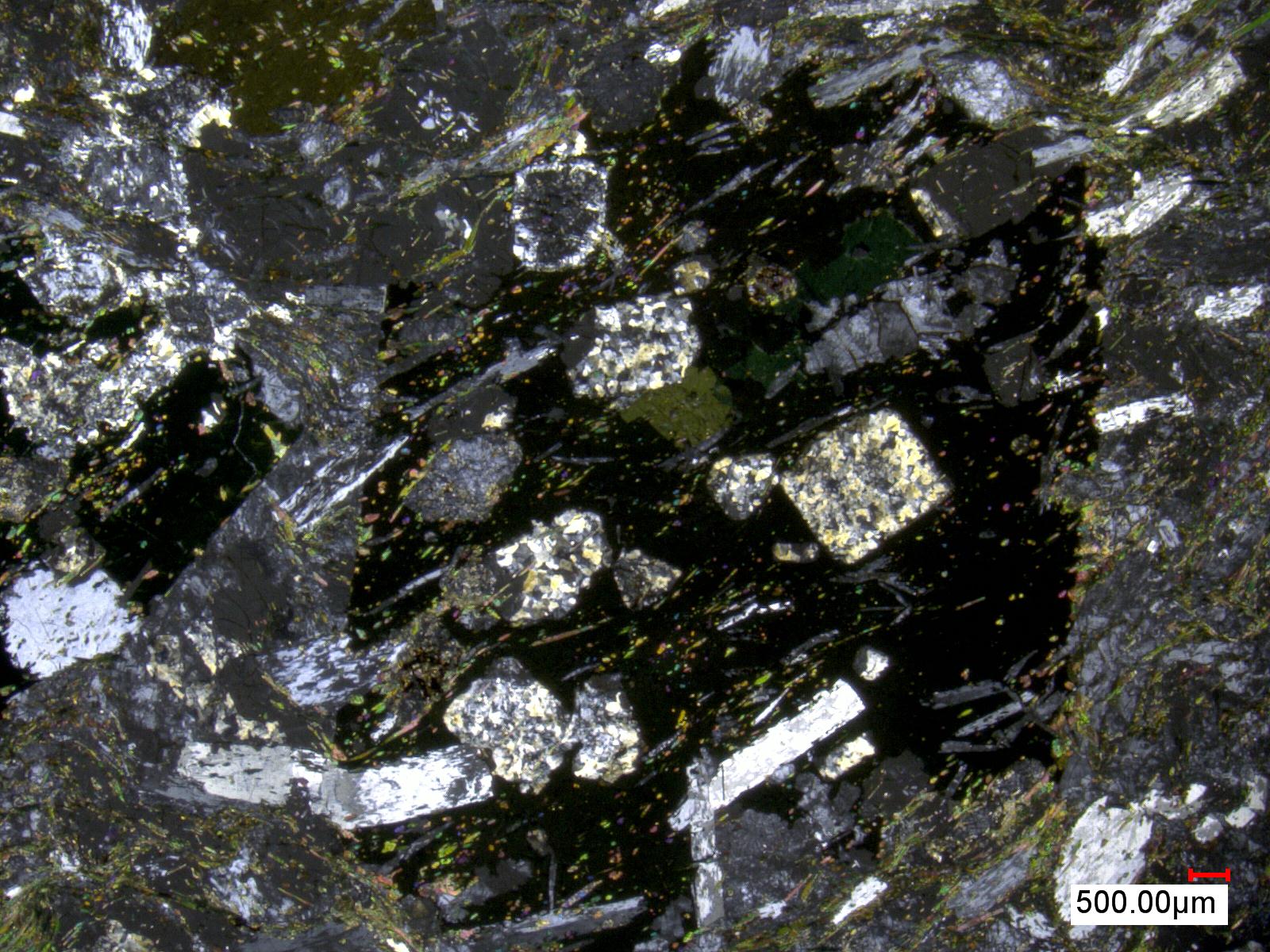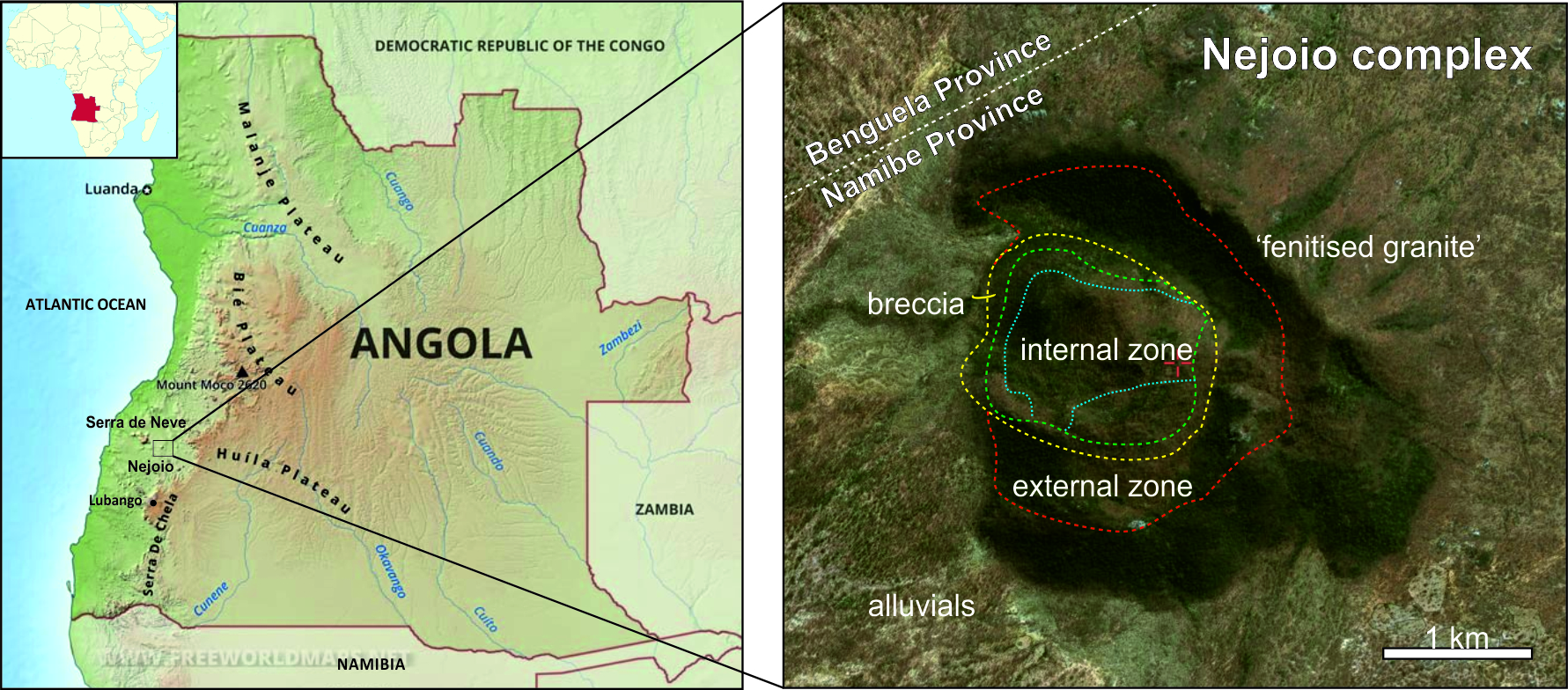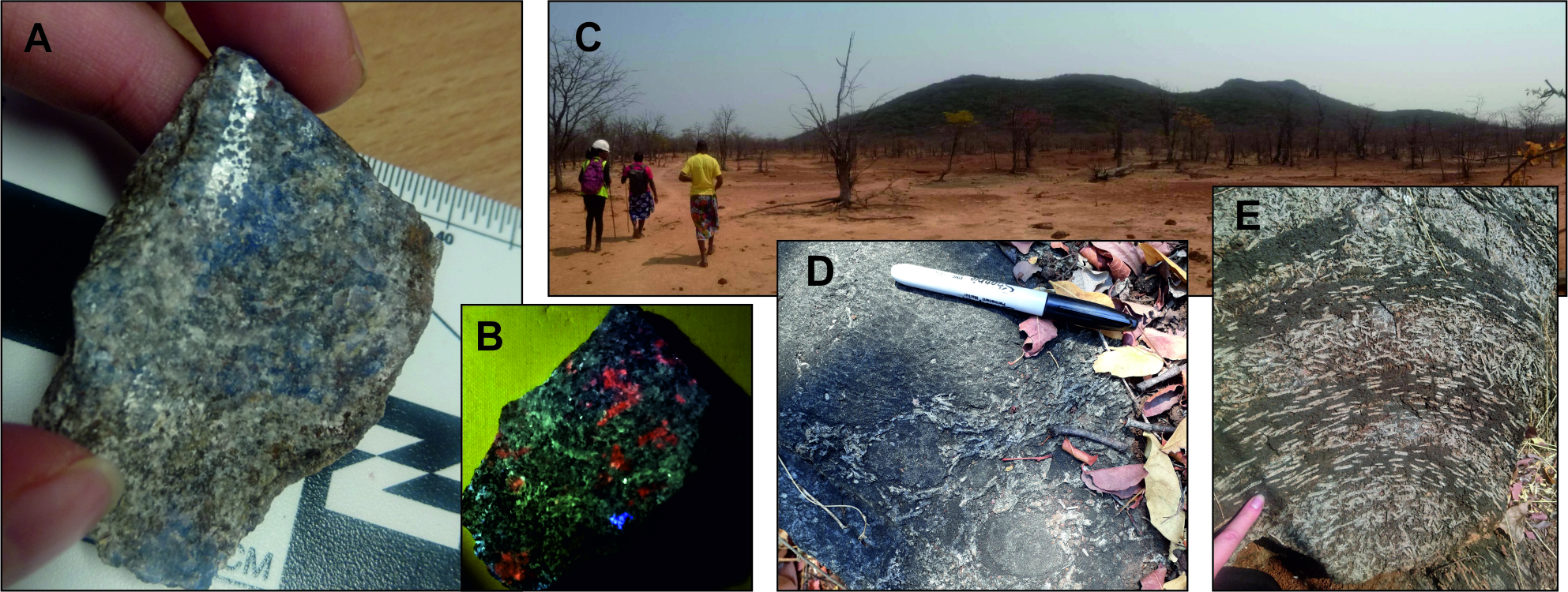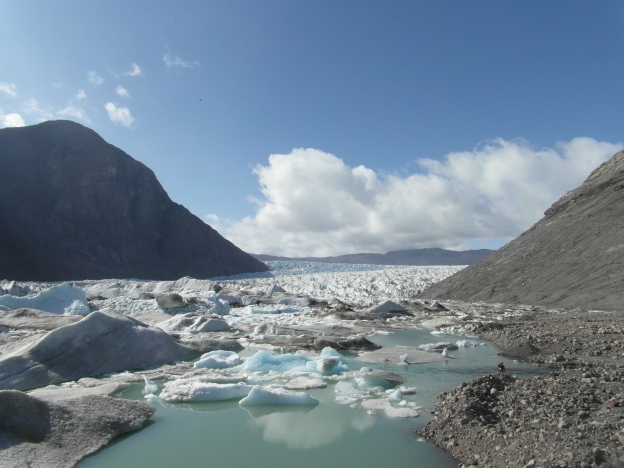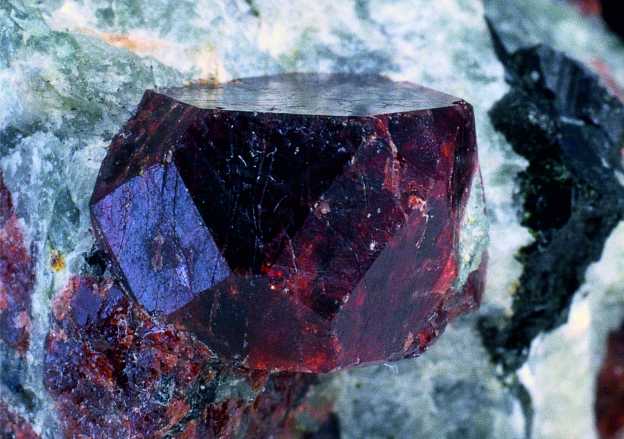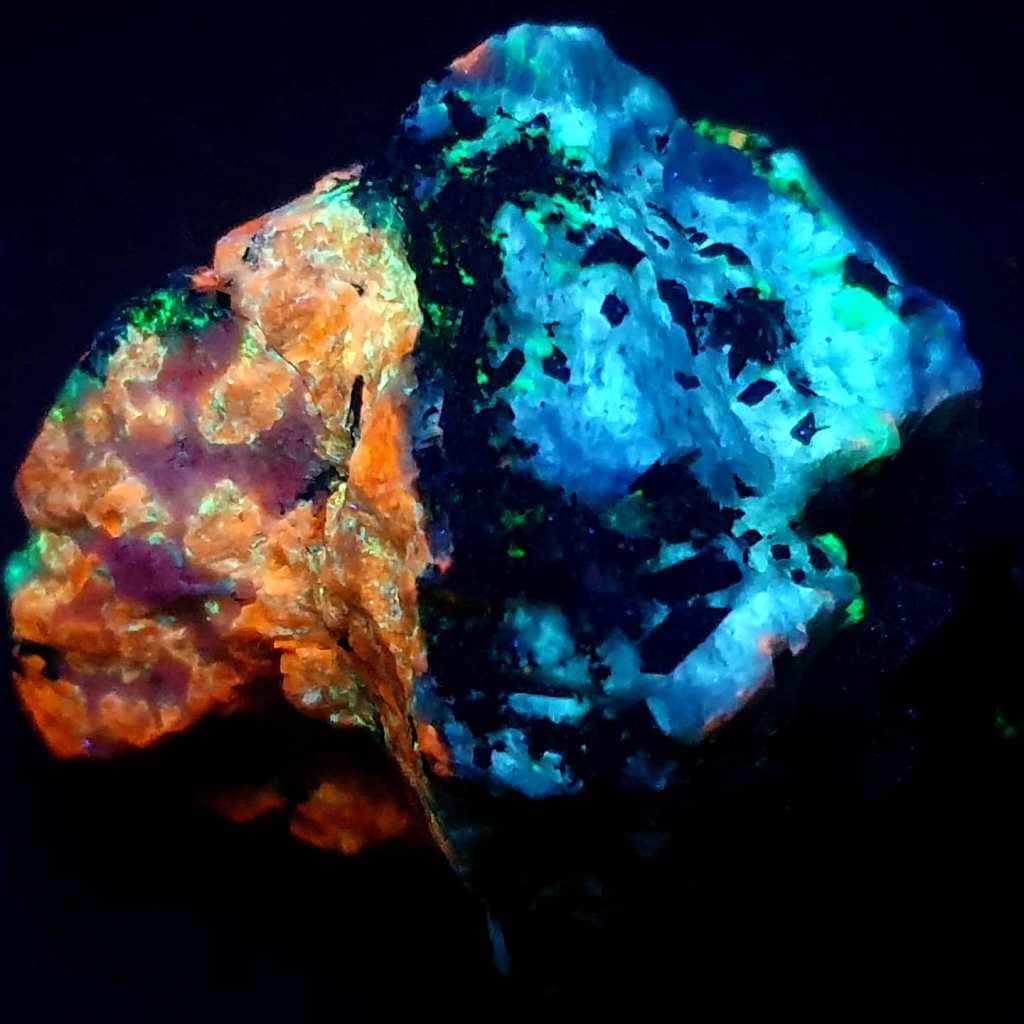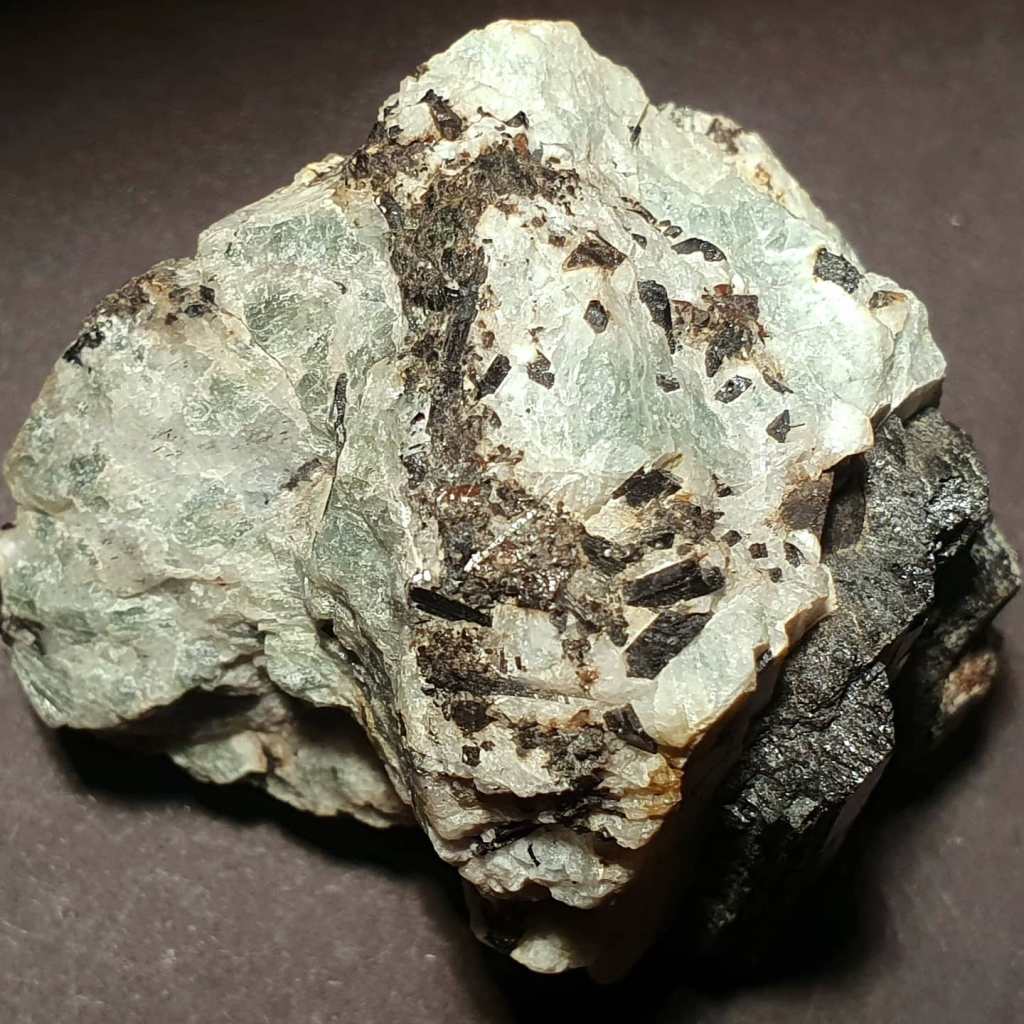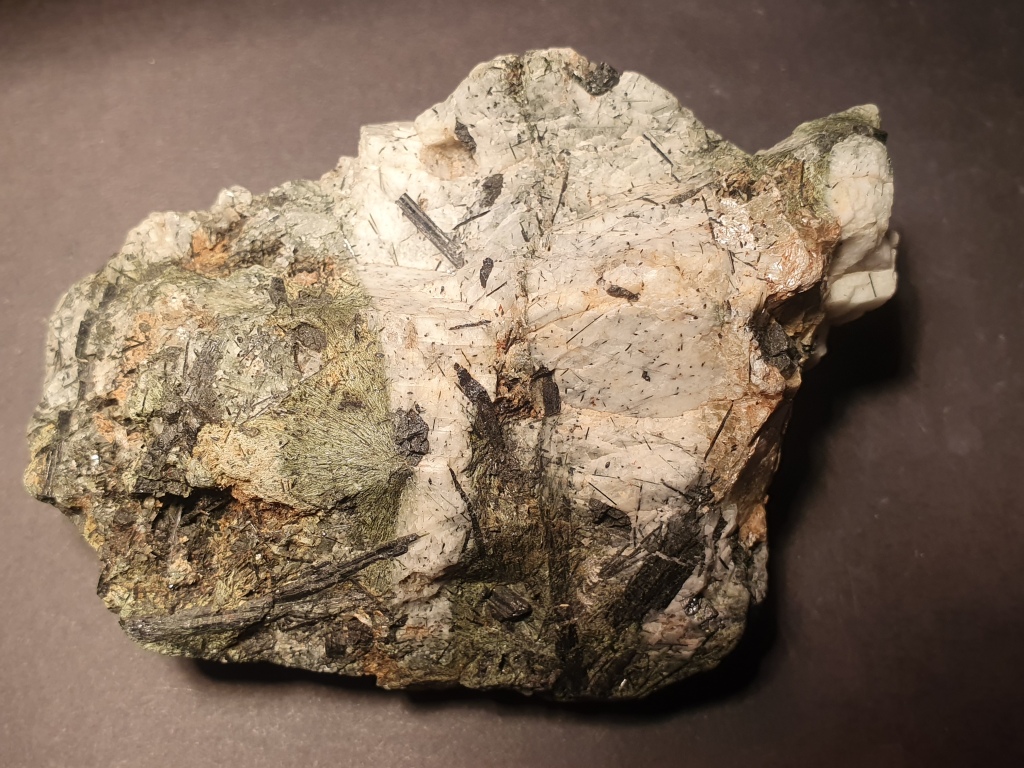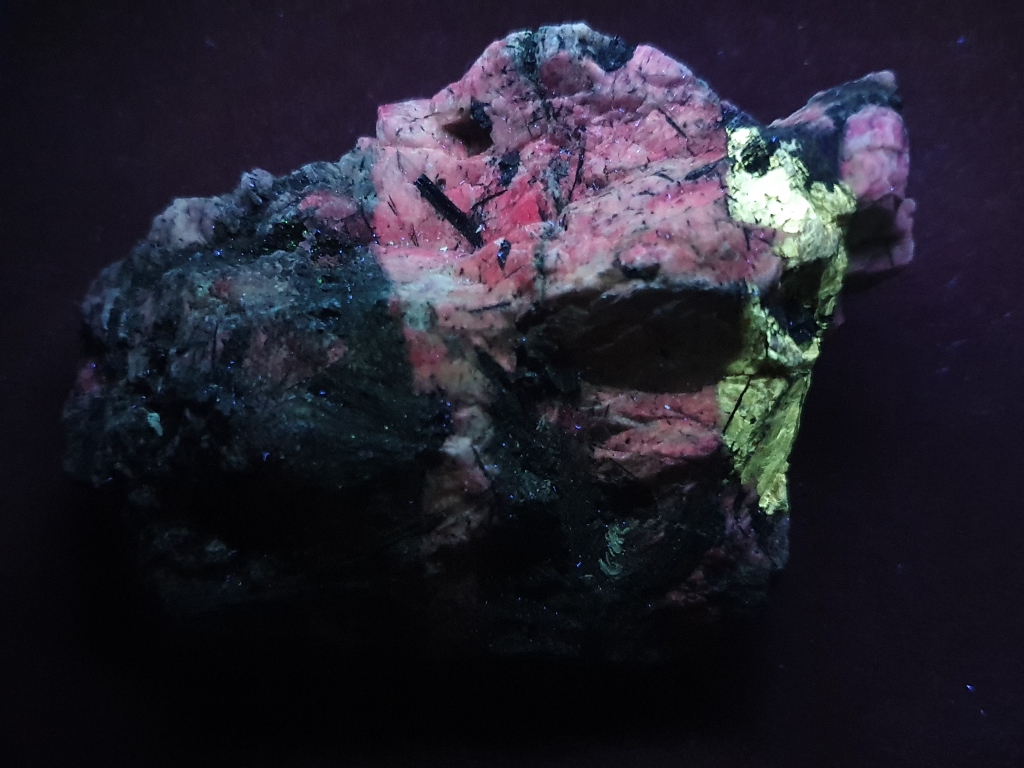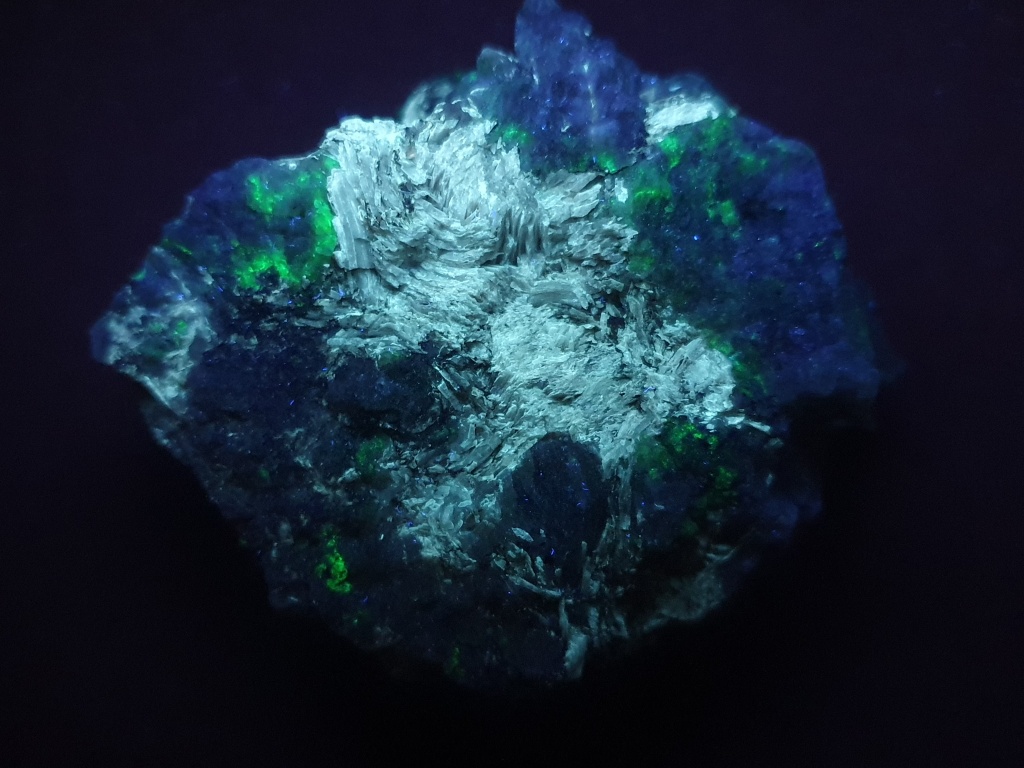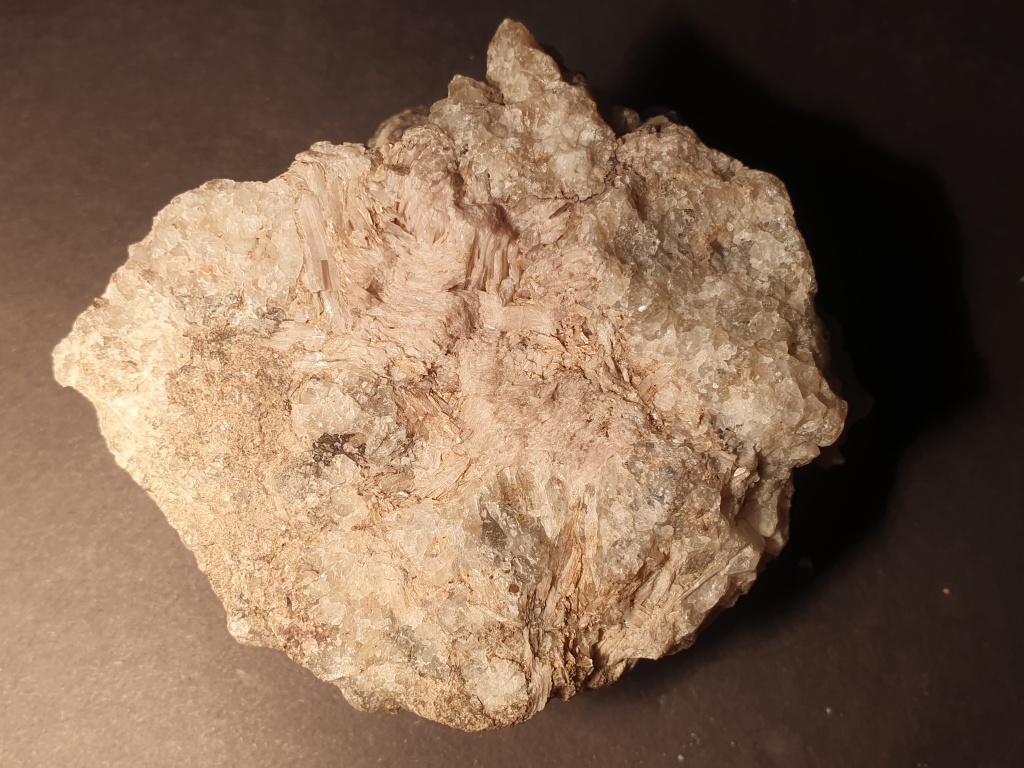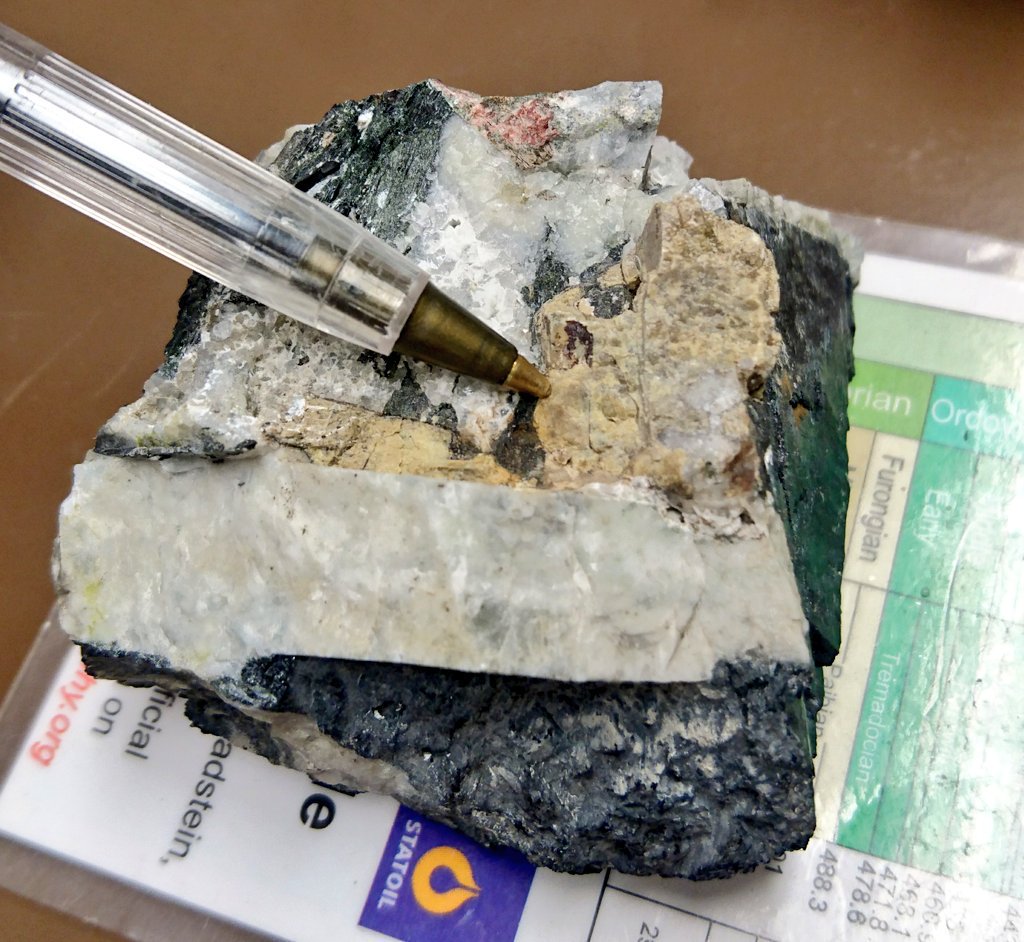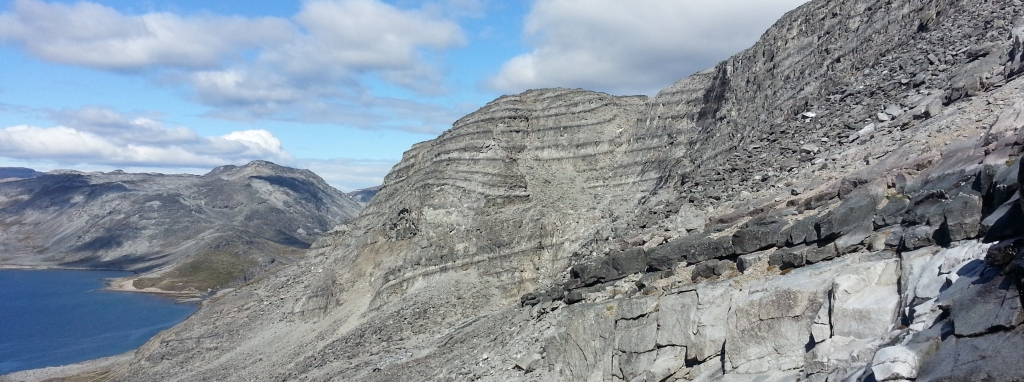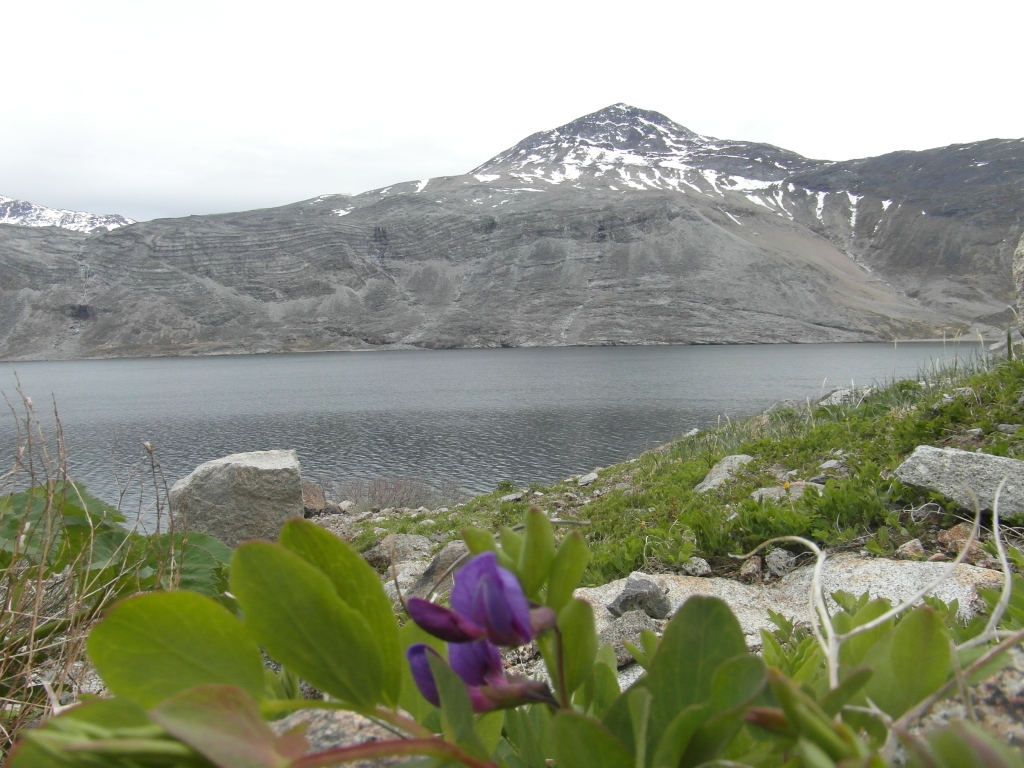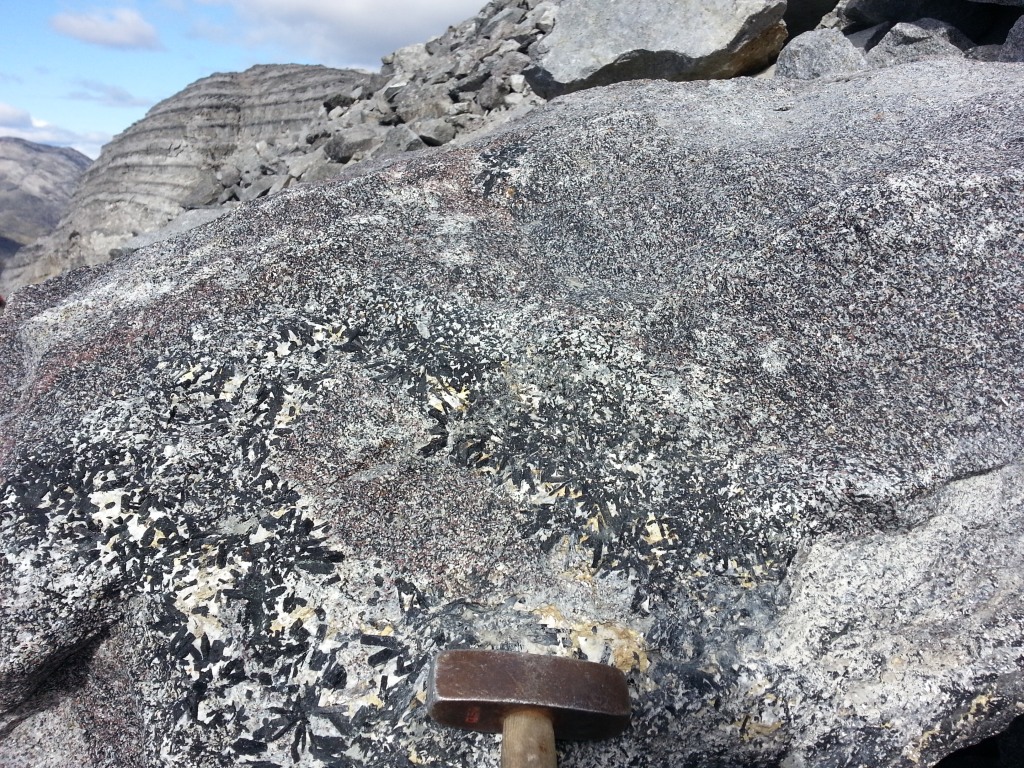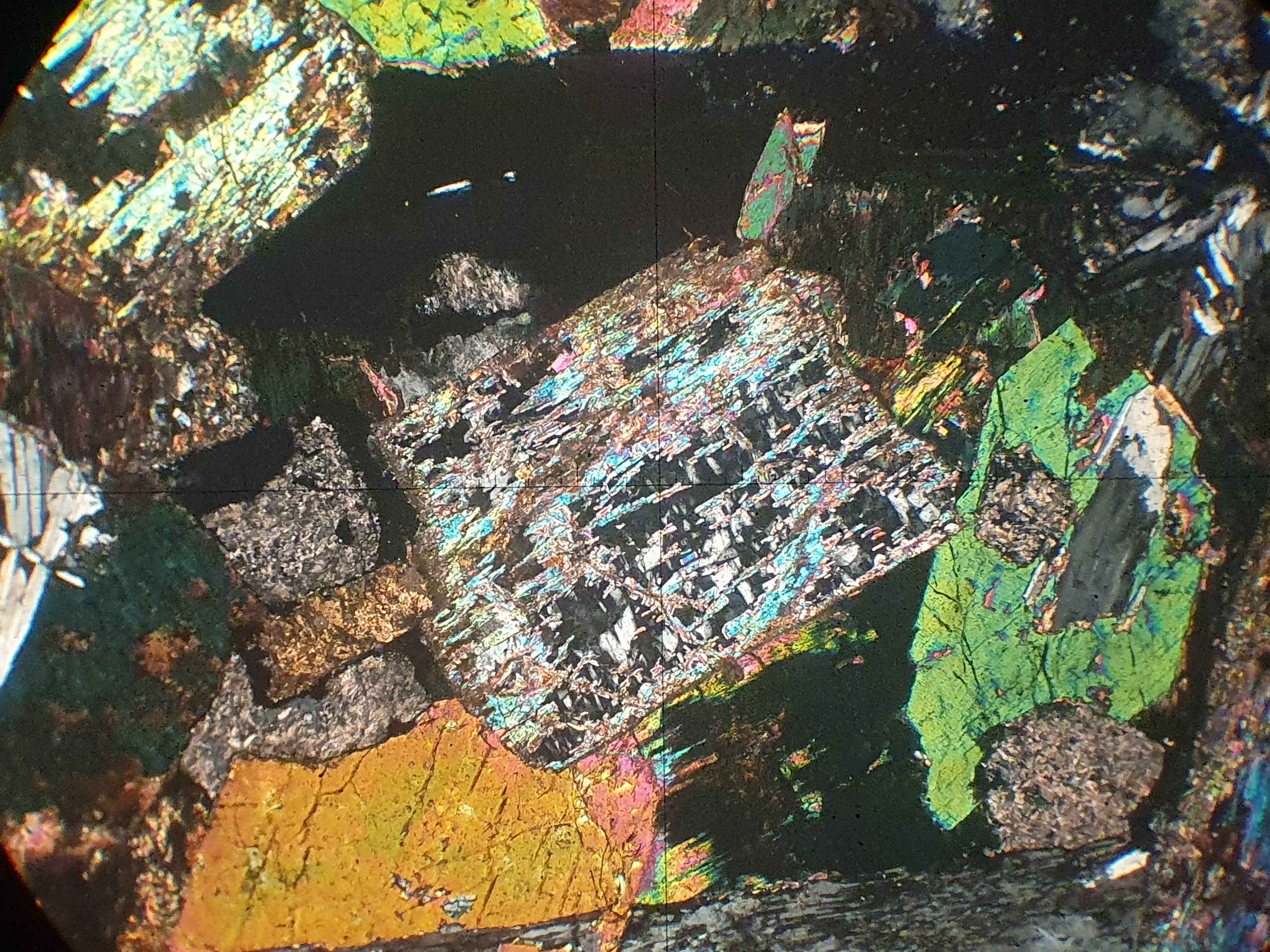Kalikone, C., Borst, A. M., Nahimana, L., Nzolang, C., Nimpagaritse, G., Batumike, J. M., Rumanya, R., Kezimana, L. F., Delvaux, D., & Dewaele, S. (2023). Pegmatite zonation and the use of muscovite as a geochemical indicator for tin-tantalum-tungsten mineralization: Case studies from the Kalehe and Idjwi areas, Democratic Republic of Congo. Journal of African Earth Sciences, 105067. https://doi.org/10.1016/J.JAFREARSCI.2023.105067
Acke J., Kwizera. D., Goodship A., Dewaele S., Barros R., Burlet C., Nachtergale S., Borst A.M., (2023) Spodumene textural variations in a deformed LCT-type pegmatite. A case study from the Musha-Ntunga area, Rwanda. SGA 17th Biennial Meeting, Zurich 2023, Vol 1, p. 208-211, ISBN: 9 782839 940443, https://e-sga.org/index.php?eID=tx_nawsecuredl&u=0&g=0&t=1712248427&hash=ddf6b119166f062c6a719939411d1abf8537ce91&file=fileadmin/sga/Shop_-_Downloads/SGA_Abstract_Volumes/2023_Zurich/SGA_2023_Zurich_Volume_1.pdf
Thomsen, T.B, Heredia, B., Ryznar, J., Zygo, W., O’Brien, H., Goodey, M, Tapster, S., Borst, A.M., Keulen, N., Malkki S., Rosa, D (2023) U-Pb dating and trace-element characterisation of potential cassiterite referencematerials applicable to Sn-W mineralisation systems, SGA 17th Biennial meeting, Zurich, Vol 3, p. 336-338 sga2023.ch/wp-content/uploads/2023/10/SGA2023_Volume-3.pdf
Beard, C. D., Goodenough, K. M., Borst, A.M., Wall, F, Deady, E., Hutchison, W., Marks, M. A. W., Walter, B. F, Finch, A., Pohl, C., Siegfried, P. R., Elliott, H.A.L., Brauch, K., (2022) Alkaline silicate HFSE-REE systems, Economic Geology, https://doi.org/10.5382/econgeo.4956
Sokół, K., Finch, A.A., Hutchison, W., Cloutier, J., Borst, A.M, & Humphreys, M. (2021) Quantifying metasomatic HFSE-REE transport from alkaline magmas. Geology https://doi.org/10.1130/G49471.1
Hutchison, W., Finch, A. A., Borst, A. M., Marks, M. A. W., Upton, B. G. J., Zerkle, A. L., Stüeken, E. E., & Boyce, A. J. (2021). Mantle sources and magma evolution in Europe’s largest rare earth element belt (Gardar Province, SW Greenland): New insights from sulfur isotopes. Earth and Planetary Science Letters, 568, 117034. https://doi.org/10.1016/J.EPSL.2021.117034
Borst, A. M., Smith, M. P., Finch, A. A., Estrade, G., Villanova-de-Benavent, C., Nason, P., Marquis, E., Horsburgh, N. J., Goodenough, K. M., Xu, C., Kynicky, J. & Geraki, K. (2020) Adsorption of rare earth elements in regolith-hosted clay deposits, Nature Communications 11, Article number: 4386, https://www.nature.com/articles/s41467-020-17801-5
Borst, A.M., Finch, A.A. Horsburgh, N.J.H. Friis, H., Gamaletsos, P.N., Goettlicher, J., Steiniger, R., Geraki, K. (2019) Structural State of Heavy Rare Earths in Eudialyte-Group Minerals, Mineralogical Magazine p. 1-16, http://doi.org/10.1180/mgm.2019.50
Finch A.A, Hutchison W. & Borst A.M. (2019) How Volcanoes Recycle the Earth’s Crust to Uncover Rare Metals that are Vital to Green Technology. The Conversation, article 125159.
Hutchison, W., Babiel, R. J., Finch, A. A., Marks, M. A. W., Markl, G., Boyce, A. J., Stueeken, E. E., Friis, H., Borst A.M., Horsburgh, N. J. (2019) Sulphur isotopes of alkaline magmas support deep recycling of Earth’s crust. Nature Communications 10, 4208 (2019), p. 1-12
Van de Ven, M., Borst, A.M., Davies, G.R, Hunt, E.J., Finch, A.A. (2019), Hydrothermal Alteration of Eudialyte-Hosted Critical Metal Deposits: Fluid Source and Implications for Deposit Grade. Minerals 9(7), 422; http://doi.org/10.3390/min9070422
A.M. Borst, T.E. Waight, A.A. Finch, M. Storey, P.J. Le Roux (2019) Dating agpaitic rocks: A multi-system (U/Pb, Sm/Nd, Rb/Sr and 40Ar/39Ar) isotopic study of layered nepheline syenites from the Ilímaussaq complex, Greenland, Lithos 324-325, p. 74-88, doi: 10.1016/j.lithos.2018.10.037
A.M. Borst, H. Friis, T.E. Waight, T.F.D. Nielsen (2018) Bulk and mush melt evolution in agpaitic systems: Insights from compositional variations in eudialyte-group minerals of the Ilímaussaq complex, South Greenland, Journal of Petrology, 59 (4), p. 589–612, doi: 10.1093/petrology/egy038
A.M. Borst, H. Friis, T. Andersen, T.E. Waight, T.F.D. Nielsen, M. Smit (2016) Zirconosilicates in the kakortokites of the Ilímaussaq complex, South Greenland: Implications for fluid evolution and HFSE-REE mineralisation in agpaitic systems, Mineralogical Magazine 80(1), p. 1-26, doi: 10.1180/minmag.2016.080.046
Kolb, A. Bartels, A.M. Borst, R-M. Bell (2013) Excursion Guidebook: GRE1. Geological Excursion to South Greenland. SGU (Geological Survey of Sweden), 12th Biennial SGA Meeting, Mineral deposit research for a high-tech world, Uppsala Sweden 12-15 August 2013. Chapters: A.M. Borst, The Ilímaussaq Complex, p. 42-50 and A.M. Borst and A. Bartels, Metallogeny of the Gardar Province, p. 50-51
A.M. Borst, B.H. Foing, G.R. Davies, W. van Westrenen (2012) Surface mineralogy and stratigraphy of the lunar South Pole-Aitken basin determined from Clementine UV/VIS and NIR data, Planetary and Space Science 68, Terrestrial Planets 1, p. 76-85, doi:10.1016/j.pss.2011.07.020
B.H. Foing, C. Stoker, J. Zavaleta, P. Ehrenfreund C. Thiel, P. Sarrazin, D. Blake, J. Page, V. Pletser, J. Hendrikse, S. Direito, M. Kotler, Z. Martins, G. Orzechowska, C. Gross, L. Wendt, J. Clarke, A.M. Borst, S.T.M. Peters, M.-B.Wilhelm, G.R. Davies & ILEWG EuroGeoMars 2009 team (2011) Field Astrobiology Research in Moon-Mars Analogue Environment: Instruments & Methods, International Journal of Astrobiology 10(3), p. 141-160
Pletser, V. and EuroGeoMars 2009 team (2010) A Mars Human Habitat: Recommendations on Crew Time Utilization, and Habitat Interfaces, Journal of Cosmology, Vol 12, p. 3928-3945
MANUSCRIPTS IN PREPARATION
Kasay, G., Giebel, J. R, Borst; A.M., Bolarinwa A. T. Beranoaguirre; A Kluge; T.. Aromolaran O. K; Raza M., Eiche E.; Kolb J.; Nzolang C.; Walter B. F. (submitted to Precambrian Geology) Petrogenesis and whole-rock geochemistry of the Bingo carbon carbonatite Complex, Democratic Republic of Congo
Beard, C. D., Finch, A, Borst, A.M, Hutchison, W, Goodenough, K. M., Millar, I., Andersen, T, Williams, H., Weller, O.M. (revised version submitted to EPSL) Mantle sources for Europe’s largest REE belt, Gardar Province, SW Greenland: Insights from Nd-Hf isotopes, Earth and Planetary Science Letters
Acke, Barros, Burlet, Nachtergaele, Uwiringiymana, Dewaele, Borst, A.M. (submitted to Economic Geology special issue) Petrography, microtextures and lithium distribution of deformed LCT-type pegmatites from the Musha-Ntunga area (Rwanda)
Goodenough, K, Shaw, R., Kinnaird, J., Nex, P., Borst A.M., (submitted to Economic Geology special issue, on invitation), Lithium pegmatites in Africa: A review
Borst A.M., Finch A.A., Siegfried, P.R., Vasilieva, E., Thomson, T., Bambi A. (In preparation) Mixing, mingling and metasomatism: Late-stage HFSE mobility and carbothermal in the Nejoio alkaline silicate complex, Angola
CONFERENCE CONTRIBUTIONS
Anouk Borst, Juan Sebastian Rodriguez, Jolan Acke, Stijn Dewaele (2024) Incremental emplacement of the giant Manono-Kitotolo spodumene pegmatites, Democratic Republic of the Congo, GAC-MAC-PEG 2024, Brandon University, Manitoba, Canada
Jolan Acke, Simon Nachtergaele, Christian Burlet, Renata Barros, Stijn Dewaele, Anouk Borst (2024) High-resolution elemental mapping and quantification of lithium-rich minerals in LCT-type pegmatites with LIBS and LA-ICP-MS, GAC-MAC-PEG 2024, Brandon University, Manitoba, Canada
Jolan Acke, Justin Uwiringiyimana, Stijn Dewaele, Anouk Borst (2024) Petrography, microtextures and lithium distribution of deformed LCT-type pegmatites from the Musha-Ntunga area (Rwanda), GAC-MAC-PEG 2024, Brandon University, Manitoba, Canada
Safari E., Nahimana L., Borst. A.M., Delvaux, D. (2023) Carte geologique detaille a léchelle 1/50.000 de líle d’Idjwi, Province du Sud-Kivu, République Démocratique du Congo : Contribution a l’etude de la chaine de Karagwe-Ankole d’Afrique Centrale., Conférence internationale Géologie et ressources naturelles en Afrique centrale – Brazzaville – Dec2023
Kalikone, C., Borst, A.M., Nahimana, L., Nzolang, C. , Nimpagaritse, G., Batumike, J.M., Rumanya, R., Delvaux, D., Dewaele, S. (2023) Zonation des pegmatites et utilisation de la muscovite comme indicateur géochimique de la minéralisation en étain-tantale-tungstène : Études de cas dans les régions de Kalehe et d’Idjwi, République Démocratique du Congo, Conférence internationale Géologie et ressources naturelles en Afrique centrale – Brazzaville – Dec 2023
Borst, AM, Acke, J. Rodriguez, J.S., Verstrepen, A., Mees, F., Dewaele, S. (2023) “Lithium pegmatites in the Karagwe-Ankole and Kibara belts of Central Africa” CAG2023, Windhoek Namibia, Book of Abstracts p. 134. https://www.mme.gov.na/files/publications/643_29th%20COLLOQUIUM%20OF%20AFRICAN%20GEOLOGY%20BOOK%20OF%20ABSTRACT-09-2023.pdf
Borst A.M., Finch A.A., Siegfried, P.R., Bambi A. (2023) Mixing, mingling and metasomatism: Late-stage HFSE mobility and carbothermalism in the Nejoio alkaline silicate complex, Angola. Goldschmidt Lyon, France https://doi.org/10.7185/gold2023.16582
Beard, C. D., Finch, A, Borst, A.M, Hutchison, W, Goodenough, K. M., Millar, I., Andersen, T, Williams, H., Weller, O.M., Mantle sources for Europe’s largest REE belt, Gardar Province, SW Greenland: Insights from Nd-Hf isotopes. Goldschmidt Lyon, France https://doi.org/10.7185/gold2023.19911
Borst, AM, Acke, J. Rodriguez, J.S., Verstrepen, A., Dewaele, S. (2023) “Lithium potential of the 3T belt in Central Africa” CRITCON2023 Adelaide, Australia. (Keynote) .
Borst, AM, Acke, J. Rodriguez, J.S., Verstrepen, A., Dewaele, S. (2023) “Lithium potential of in Central Africa” Greenpeg SIM meeting (Invited) .
Borst, AM., Acke, J., Van der Does, L., Goodship, A., Kwizera., D. (2022) 3Ts and Li-batteries: Regional zonation and Li potential of rare metal pegmatites in the Great Lakes Region of Central Africa. Goldschmidt Hawaii 2022 (Keynote) https://doi.org/10.46427/gold2022.12152
Borst, A.M., Finch, A.A., Nielson, G., Siegfried, P.R., Lopes, E., Eugenio, A. and Bambi, A.C.J.M. (2021) Alkaline magmatism and critical metals in Angola: Field observations and petrography of the Nejoio nepheline syenite complex. Pp. 30–31 in: Geologica Belgica. Africa Museum, Tervuren.
Borst, A.M., Finch, A.A., Horsburgh, N., Smith, M., Geraki, K., (2021) Mineralogical effects of alteration and weathering in peralkaline silicate hosted REE-HFSE deposits, Goldschmidt Online 2021 (Invited) https://doi.org/10.7185/gold2021.5981
McIlquham J, Borst AM, Allender EJ, Foing. B. Geological context of recent lunar landing sites using multispectral analysis, vEGU2021 (online) April 2021
Hutchison W, Finch AA, Borst AM, Stüeken EE, Zerkle AL & Boyce AJ (2020) Using S isotopes of alkaline magmas to unlock long-term records of crustal recycling on Earth. Geol Soc of London Sulfur Conference (online) Dec 2020.
Hutchison W, Finch AA, Borst AM, Marks MAW, Zerkle AL, Stüeken EE & Boyce AJ (2020) Mantle Sources and Magma Evolution in Europe’s Largest Rare Earth Element Belt: Gardar Province, SW Greenland. AGU Innovative Session (online).
Goodenough KM, Wall F, Deady E, Beard C, Borst AM, Finch AA, Smith MP, Estrade G and Marquis E (2020) “Primary rare earth element resources: a decade of research and development” European Rare Earth Resources 2020, 6-9 October 2020 (Keynote)
A.M Borst, A.A Finch, P.R Siegfried, A. Bambi, G. Tchimbali, A. Dos Santos, E Lopes, A Eugenio., E Jeremias and S Azevedo (2020) Looking for hi-tech metals in Angola: the Nejoio alkaline complex, MDSG2020, London NHM
Beard, C. D., Goodenough, K. M., Borst, A.M., Finch, A.A., Hutchison, W., Marks, M. A. W., Walter, B. F, Wall, F., Broom-Fendley, S., Siegfried, P. R., Elliott, H.A.L., Speiser, A. Woolley, A. R., Humphreys-Williams, E.,. Banks, G. J, Pohl, C., Brauch, K., and the HiTechAlkCarb consortium (2020) Geomodels for Hi-tech raw materials in alkaline and carbonatite systems, MDSG2020, London NHM
P.N. Gamaletsos, A.M. Borst, T. Kasama, A.A. Finch, A. Godelitsas, I.T. Tzifas, Y. Pontikes, A. Filippidis, (2019) Studying the Local Distribution of Thorium in Eudialyte Deposits Associated with Peralkaline Igneous Rocks (Greenland) by Electron Microscopy & Spectroscopic Techniques, 15th International Congress of the Geologial Society of Greece, Athens, Extended Abstract
Finch, A. A., Hutchison, W., Borst, A. M., Horsburgh, N. J. & Stuecken, E. E. (2019) The architecture and geochemistry of magmatic roof zones – implications for mineralisation and exploration. in 5th SGA Biennial Meeting 1712–1715.
A.M. Borst, M. Smith, A. Finch, N.J. Horsburgh, G. Estrade, E. Marquis, J. Kynicky, C. Xu, K. Geraki (2019) Resolving the structural state of heavy rare earth elements in lateritic ion adsorption clays, 15th SGA Biennial Meeting, Glasgow
C.D. Beard, K M. Goodenough, S. Broom-Fendley, A.M. Borst, N.M.W. Roberts, A. A. Finch, E.A. Deady (2019) Subducted sediments as a source for REE in mineralised post-collisional alkaline-carbonatite systems, Goldschmidt Barcelona
A.M. Borst, A.A. Finch, N.J.H. Horsburgh, H. Friis, P.N. Gamaletsos, J. Goettlicher, R. Steiniger, K. Geraki (2019) Structural state of REE in Eudialyte-Hosted Critical Metal Deposits. Goldschmidt Barcelona
A.M. Borst, A.A. Finch, M. van de Ven, N.J. Horsburgh, H. Friis, W. Hutchison, K. Sokol (2019) Peralkaline-hosted Critical Metal Deposits: From magmatic enrichment to hydrothermal mobilisation, 3rd International Critical Metal Conference, Edinburgh (Keynote)
A.M. Borst, A.A. Finch, N.J.H. Horsburgh, H. Friis, P.N. Gamaletsos, J. Goettlicher, R. Steiniger, K. Geraki (2019) Rare Earth element substitution in Eudialyte Group Minerals, An X-ray Absorption study. VMSG2019 St Andrews
A.M. Borst, M. Smith, A. Finch, E. Marquis, G. Estrade, J. Kynicky, C. Xu, K. Geraki (2018) Structural state of REE in ion adsorption deposits: A XANES/EXAFS study of laterites from Madagascar and China, RFG 2018, Vancouver, June 2018, Abstract 2141 (Oral)
A.M. Borst, P.N. Gamaletsos, A. A. Finch, N.J.H. Horsburgh, H. Friis, T. Kasama, J. Goettlicher, R. Steiniger, K. Geraki (2018) Probing the structural state of Y and Nd in eudialyte using X-ray absorption spectroscopy, NGWM Copenhagen (Oral)
A.M. Borst, A. A. Finch, H. Friis, N.J.H. Horsburgh, P.N. Gamaletsos, J. Goettlicher, R. Steiniger, K. Geraki (2018) Structural state of Y and Nd in eudialyte using X-ray absorption spectroscopy, MDSG Brighton (Oral)
M. van de Ven, A.M. Borst, G. Davies, A. Finch (2018) Trace element and Nd-isotope data of eudialyte from the Kakortokite sequence of the Ilímaussaq complex suggest subsolidus remobilization of rare earth elements by magmatic fluids, NGWM Copenhagen, Abstract
A. Finch, A. M. Borst, W. Hutchison, N. J. Horsburgh, T. Andersen, S. Simonsen (2018) The Spatio-Temporal Evolution of Hf isotopes in the Gardar: Evidence for Mid-Proterozoic Crustal Recycling? NGWM Copenhagen
N. Gamaletsos, A.M. Borst, T. Kasama, A. A. Finch, J. Goettlicher, R. Steiniger, B. Wenzell, Z.I. Balogh, A. Godelitsas (2018) Thorium in eudialyte ore deposits from Greenland studied by synchrotron radiation (μ-XRF/-XAFS) and electron microscopic techniques (SEM, TEM), NGWM Copenhagen
G.R. Davies, Q. van der Meer, M. Klaver, A.M. Borst, B. Davidheiser, T.J. Meulemans, S. de Jong, C.S. Nooitgedacht, C.M. de Heij (2017) The genesis and evolution of the subcontinental lithosphere beneath Botswana and N. South Africa, 11th International Kimberlite Conference 2017, Gabarone Botswana
Nason, M. Smith, A. Borst, A. Finch, G. Estrade, E. Marquis, T. Geraki, (2017) REE enrichment processes in the Ambohimirahavavy Complex ion adsorption deposit, Madagascar using Y-Nd μ-XANES Spectroscopy, Goldschmidt 2017, Paris
Hutchison, A.A. Finch, A.J. Boyce, H. Friis, A. M. Borst, N. J. Horsburgh (2017) New insights into magma ascent and emplacement from alkaline roof zones of Southern Greenland, VMSG 2017 Leeds
A. Finch , A. M. Borst, W. Hutchison, N. J. Horsburgh, T. Andersen, S. Simonsen, (2017) The Spatio-Temporal Evolution of Rift Magmatism: Insights from Hf in Gardar Magmas, VMSG 2017 Leeds
A.M. Borst, H. Friis, A.A. Finch, (2016) Optimising the REE-Zr-Nb potential of eudialyte and its alteration products in the Ilímaussaq complex, South Greenland, MDSG 2016 Abstract, Bristol (Poster), Applied Earth Science, 126:2, 43-44, DOI: 10.1080/03717453.2017.1306233
A.M. Borst, H. Friis, T.E. Waight (2015) Fractionation of agpaitic magmas from compositional zoning in kakortokite-hosted eudialyte, Ilímaussaq Complex, Greenland. Goldschmidt Prague, Abstract 2384 p. 347 (Oral presentation)
A.M. Borst, H. Friis, T. Andersen, T.E. Waight, T.F.D. Nielsen, M. Smit (2015) Chemographic modelling of secondary zirconosilicates: Implications on late-stage fluid evolution in agpaitic nepheline syenites of the Ilímaussaq Complex, South Greenland, Dansk Geologisk Foregning General Assembly (Poster presentation, Best PhD Poster)
A.M. Borst (2014) REE mineralisation in the Ilímaussaq Complex, South Greenland, IGN PhD Conference, Copenhagen University, November 2014 (Oral presentation)
A.M. Borst, M. Smit, H. Friis, T.E. Waight, T.F.D. Nielsen (2014) Alteration of eudialyte and implications on the REE, Zr, and Nb resources of the layered kakortokite sequence in the Ilímaussaq Complex, South West Greenland, ERES Conference, Milos Greece, September 2014, Conference Proceedings p.325-332 (Oral presentation/Extended Abstract)
A.M. Borst, T.E. Waight, T.F.D. Nielsen, P. Kalvig (2014) Eudialyte decomposition and REE – HFSE fractionation in the kakortokite series of the peralkaline Ilímaussaq Complex, South Greenland, 31st Nordic Geological Winter Meeting Lund, 2014, Abstract, p.52 (Poster presentation)
A.M. Borst, B. Davidheiser, T. Meulemans, M. Klaver, G. Davies (2012), The origin and evolution of the lithospheric mantle beneath the Makondi Fold Belt in Botswana; an extensive geochemical study on peridotite xenoliths from the Letlhakane diamond mine, 10th International Kimberlite Conference, India, Extended Abstract (Poster presentation)
Meulemans, A.M. Borst, B. Davidheiser, G.R. Davies (2012) The origin and modification of the subcontinental lithospheric mantle of Botswana: constraints from peridotite xenoliths of the Orapa mine Botswana, 10th International Kimberlite Conference, India, 2012 (Oral presentation by G. Davies)
Hendrikse, B. H. Foing, E. Monaghan, C. Stoker, J. Zavaleta, F. Selch, P. Ehrenfreund, L. Wendt, C. Gross, C. Thiel, S. Peters, A.M. Borst, P. Sarrazin, D. Blake, L. Boche-Sauvan, J. Page, V. Pletser, P. Mahapatra, D. Wills, C. McKay, G. Davies, W. van Westrenen, P. Batenburg, G. Drijkoningen, E. Slob, P. Poulakis, G. Visentin, A. Noroozi, E. Gill, M. Guglielmi, M. Freire, R. Walker, ExoGeoLab Team, EuroGeoMars Team (2010), Highlights from Remote Controlled Rover for EuroGeoMars MDRS Campaign, 41st Lunar and Planetary Science Conference, Abstract #2435
Boche-Sauvan, B. H. Foing, C. Stoker, P. Ehrenfreund, L. Wendt, C. Gross, C. Thiel, S. Peters, A.M. Borst, J. Zavaleta, P. Sarrazin, D. Blake, J. Page, V. Pletser, E. Monaghan, P. Mahapatra, A. Noroozi, P. Giannopoulos, A. Calzada, R. Walker, T. Zegers, ExoGeoLab, ILEWG ExoHab Team, EuroGeoMars Team (2010), ILEWG ExoHab & EuroGeoMars Campaigns: Habitability & Human Operations, 41st Lunar and Planetary Science Conference, Abstract #1759
B.H. Foing, L. Boche-Sauvan, C. Stoker, P. Ehrenfreund, L. Wendt, C. Gross, C. Thiel, S. Peters, A.M. Borst, J. Zavaleta, P. Sarrazin, D. Blake, J. Page, V. Pletser, E. Monaghan, P. Mahapatra, D. Wills, A. Noroozi, R. Walker, T. Zegers, Exolab and Exohab Team EuroGeoMars Team (2010), Exohab and EuroGeoMars Campaigns: Human Exploration and Astrobiology, Astrobiology Science Conference, Abstract # 5625
Foing B. H. Mahapatra P. Boche-Sauvan L. Som S. Page J. Stoker C. Zhavaleta J. Sarrazin P. Blake D. Poulakis P. Visentin G. Noroozi A. Ehrenfreund P. Barton A. Lebreton J. P. Zegers T. Koschny D. Peters S. Borst A.M. Monaghan E. Wills D. Thiel C. Wendt L. Gross C. Nijman F. Pletser V. McKay C. Davies G. van Westrenen W. Batenburg P. Drijkoningen G. Slob E. Gill E. Guglielmi M. Freire M. Walker R. ExoGeoLab Team (2010), ExoGeoLab Test Bench for Landers, Rovers and Astrobiology Instrument, Astrobiology Science Conference, Abstract #5477
A.M. Borst, S. Peters, B.H. Foing, C. Stoker, L. Wendt, C. Gross, J. Zhavaleta, P. Sarrazin, D. Blake, P. Ehrenfreund, L. Boche-Sauvan, J. Page, C. McKay, P. Batenburg, G. Drijkoningen, E. Slob, P. Poulakis, G. Visentin, A. Noroozi, E. Gill, M. Guglielmi, M. Freire, R. Walker, M. Sabbatini, V. Pletser, E. Monaghan, R. Ernst, J. Oosthoek, P. Mahapatra, D. Wills, C. Thiel, J.P. Lebreton, T. Zegers, A. Chicarro, D. Koschny, J. Vago, H.Svedhem, G. Davies, A. Westenberg, J. Edwards, ExoGeoLab team & EuroGeoMars team (2009) Geochemistry of Utah Morrison formation from EuroGeoMars campaign, Int. Conf. Comparative Planetology: Venus – Earth – Mars, ESA-ESTEC, Noordwijk, The Netherlands (Oral Presentation)
A.M. Borst, F. Bexkens, B. Foing, D. Koschny, G. Davies and W. van Westrenen (2009) Geological and geochemical analysis of stratigraphic units in the South Pole – Aitken Basin, Geophysical Research Abstracts, Vol. 11, EGU General Assembly, Abstract 12255-2 (Oral presentation)
B.H. Foing, S. Peters, A.M. Borst, L. Wendt, C. Gross, C. Stoker, J. Zhavaleta, P. Sarrazin, D. Blake, P. Ehrenfreund, L. Boche-Sauvan, J. Page, C. McKay, P. Batenburg, G. Drijkoningen, E. Slob, P. Poulakis, G. Visentin, A. Noroozi, E. Gill, M. Guglielmi, M. Freire, R. Walker, V. Pletser, E. Monaghan, R. Ernst, J. Oosthoek, P. Mahapatra , D. Wills, C. Thiel, J.P. Lebreton, T. Zegers, A. Chicarro, D. Koschny, J. Vago, H.Svedhem, G. Davies, A. Westenberg, J. Edwards, ExoGeoLab team & EuroGeoMars team (2009). Geology and geochemistry highlights from EuroGeomars MDRS campaign, Int. Conf. Comparative Planetology: Venus – Earth – Mars, ESA-ESTEC, Noordwijk, The Netherlands
P.A.W. Batenburg, B.H. Foing, G.G. Drijkoningen, E.K.A. Gill, P. Poulakis, G. Visentin, J. Page, V. Pletser, S. Peters, A.M.Borst, P. Mahapatra, ExoGeoLab Team, EuroGeoMars Team (2009), “Reflection Seismology Systems for Planetary Geology: First Tests at ESTEC ExoGeoLab and MDRS, Utah”, 40th Lunar and Planetary Science Congress, Abstract #2536
B.H. Foing, J. Page, P. Poulakis, G. Visentin, A. Noroozi, E. Gill, P. Batenburg, G. Drijkoningen, E. Slob, M. Guglielmi, M. Freire, R. Walker, M. Sabbatini, V. Pletser, E. Monaghan, L. Boche-Sauvan, R. Ernst, J. Oosthoek, S. Peters, A.M. Borst, P. Mahapatra, D. Wills, C. Thiel, L. Wendt, C. Gross, J.P. Lebreton, T. Zegers, C. Stoker, J. Zhavaleta, P. Sarrazin, C. Blake, C. McKay, P. Ehrenfreund, A. Chicarro, D. Koschny, J. Vago, H.Svedhem, G. Davies, ExoGeoLab team & EuroGeoMars team (2009) ExoGeoLab lander and rover instruments, Int. Conf. Comparative Planetology: Venus – Earth – Mars, ESA-ESTEC, Noordwijk, The Netherlands
Hendrikse, B.H. Foing, C. Stoker, J. Zavaleta, F. Selch, P. Ehrenfreund, L. Wendt, C. Gross, C. Thiel, S. Peters, A.M. Borst, P. Sarrazin, D. Blake, L. Boche-Sauvan, J. Page, V. Pletser, E. Monaghan, P. Mahapatra , D. Wills, C. McKay, G. Davies, W. van Westrenen, P. Batenburg, G. Drijkoningen, E. Slob, P. Poulakis, G. Visentin, A. Noroozi, E. Gill, M. Guglielmi, M. Freire, R. Walker, ExoGeoLab team & EuroGeoMars team (2009). Highlights from Remote Controlled Rover for EuroGeoMars MDRS Campaign, European Planetary Science Congress, EPSC Abstracts, Vol. 4
Foing B. H. Koschny D. Grieger B. Josset J.-L. Beauvivre S. Grande M. Huovelin J. Keller H. U. Mall U. Nathues A. Malkki A. Noci G. Sodnik Z. Kellett B. Pinet P. Chevrel S. Cerroni P. de Sanctis M. C. Barucci M. A. Erard S. Despan D. Muinonen K. Shevchenko V. Shkuratov Y. Ellouzi M. Peters S. Borst A.M.. Bexkens F. Boche-Sauvan L. Mahapatra P. Almeida M. Frew D. Volp J. Heather D. McMannamon P. Camino O. Racca G., (2009) SMART-1 Results and Targets for LRO, LRO Science Target Meeting, Abtract #6049
Wendt, L., Mahapatra, P., Gross, C., Borst, A.M., Foing, B. H., ExoGeoLab Team, EuroGeoMars Team (2009), Raman investigations of the EuroGeoMars Campaign, EPSC, Abstract #457
S.T.M. Peters, A.M. Borst, L. Wendt, C. Gross, C. Stoker, J. Zhavaleta, P. Sarrazin, E. Slob, V. Pletser, B. Foing, and the ExoGeoLab team & EuroGeoMars Team (2009) EuroGeoMars mission and techniques: First results for geology and geochemistry, Geophysical Research Abstracts, Vol. 11, EGU2009-13353, EGU General Assembly
Le Gac, K. Ammon, N. Gortsas and the Orange Team (2009) PALISA-Observation and Sample Return Mission to the M-Type Asteroid (216) Kleopatra, Geophysical Research Abstracts, Vol. 11, EGU2009-8828, EGU General Assembly
Ammon and the Orange Team (2009) PALISA-OBSERVATION AND SAMPLE RETURN MISSION TO THE M-TYPE ASTEROID (216) KLEOPATRA, 59th International Astronautical Congress 2008, IAC-08.A3.2.INT25, Abstract #2748
A.M. Borst, F. Bexkens, B.H. Foing, D. Koschny, S.T.M. Peters (2008) Geochemical analysis of units within the South Pole-Aitken Basin, EPSC, Muenster, Germany, Abstract 00129, (Oral presentation)
S.T.M. Peters, B.H. Foing, A.M. Borst, F. Bexkens, D. Koschny, A. Rossi, J.L. Josset, S. Beauvivre, (2008) Smart-1/Clementine Study of Humorum, Procellarum & South-Pole Aitken Basins: Coupling between impacts, volcanism and tectonics, LPSCI, Abstract #2115
F.S. Bexkens, A.M. Borst, B.H. Foing, S.T.M. Peters, D. Koschny (2008), The Global Geological context and impact signatures in the Lunar SPA Basin; the biggest cataclysm in the solar system, ESLAB abstract, ESRIN Frascatti Italy,
B.H. Foing, D. Koschny, B. Grieger, J.-L. Josset, S. Beauvivre, M. Grande, I. Crawford, B. Swinyard, J. Huovelin, L. Alha, H.U. Keller, U. Mall, A. Nathues, A. Malkki, G. Noci, Z. Sodnik, B. Kellett, P. Pinet, S. Chevrel, P. Cerroni, M.C. de Sanctis, M.A. Barucci, S. Erard, D. Despan, K. Muinonen, J. Naranen, V. Shevchenko, Y. Shkuratov, M. Ellouzi, S. Peters, F. Bexkens, A. Borst, C. Odum, L. Boche-Sauvan, E. Monaghan, D. Wills, M. Almeida, D. Frew, J.Volp, D. Heather, P. McMannamon, O. Camino, G.Racca, (2008) SMART-1 RESULTS AND LESSONS LEARNED FOR PREPARING FUTURE EXPLORATION, LEAG-ICEUM-SRR, Florida, Abstract #4099
POPULAR SCIENCE/OUTREACH
- Interviewed for Chemistry World by Ahthony King “Lithium discovery in US volcano could be biggest deposit ever found” https://www.chemistryworld.com/news/lithium-discovery-in-us-volcano-could-be-biggest-deposit-ever-found/4018032.article (This interview and personal quotes were picked up by over 100 news outlets around the world, with coverage in Dutch, French, German, Portuguese, Spanish, Italian, Turkish, Finnish, Croatian, Indonesian, Vietnamese and more).
- Interviewed for DW by Rosie Birchard “Von der Leyen talks raw materials, Ukraine in Canada, US https://www.dw.com/en/von-der-leyen-talks-raw-materials-ukraine-in-canada-us/a-64903085?mobileApp=true Mar 2023
- TV Interview on Belgian Live TV, news show: ‘VRT NWS Laat’ about ‘Lithium discovery in India’: https://www.vrt.be/vrtnu/a-z/vrt-nws-laat/2023/vrt-nws-laat-d20230210/ Feb 2023
- Interview in NRC Handelsblad: “Ligt de groene toekomst van Europa in een Zweedse mijn? Dat staat nog te bezien” by Marcel aan de Brugh, 9-02-2023. https://www.nrc.nl/nieuws/2023/02/09/ligt-de-groene-toekomst-van-europa-in-een-zweedse-mijn-dat-staat-nog-te-bezien-a4156532
- TV Interview on Belgian Live TV about ‘Sweden discovers deposit of Rare Earth Elements’ LKAB, Kiruna deposit. ‘VRT NWS Laat’ Live TV: https://www.vrt.be/vrtnu/a-z/vrt-nws-laat/2023/vrt-nws-laat-d20230112/ , Jan 2023
- Phone Interview for De Morgen Newspaper article on Kiruna discovery of REE. Printed article in ‘De Morgen’ newspaper. Het kortste interview, Anouk Borst. ‘Die aardmetalen zijn nodig voor de groene transitie’ Jan 2023
- Interview about Global Lithium supply chains, by Anthony King, science journalist, for a short news item ‘EVs drive Li demand’ published in Chemistry & Industry, Volume 86, Issue 12, p. 15: DOI:10.1002/cind.10034 Nov 2022
- RMCA outreach event – Flanders Science Days: Guided tour through the mineral display cabinets of the Africa Museum Nov 2022
- Private interview with Resource Matters (Cristian Trujillo and Sophia Pickels), an NGO based in Brussels, for research for the European Union on strategic minerals located in DRC: Challenges and/or opportunities for lithium mining in central Africa. The report was not for publication. Sept 2022
- Interview with Anthony King, science journalist, for an item on the European ‘Critical Raw Materials Act’ published in magazine Sept 2022 Chemistry World, Royal Society of Chemistry: https://www.chemistryworld.com/news/eu-plots-course-to-secure-raw-materials-vital-to-a-low-carbon-economy/4016263.article?adredir=1
- Off record interview with journalists (Sophia Pickels and Jack Wolf) working for the United Nations, for an article on Lithium mining in the DRC, for an internal European report Aug 2022
- MinSoc UK, Applied Mineralogist special issue. Online blog: Lithium potential of tin-tantalum-niobium pegmatites in Rwanda, Applied Mineralogist 2022 7(2), p. 3-5 minersoc.org/wp-content/uploads/2022/07/AppliedMineralogist_June2022.pdf JUNE 2022
- Special Feature in Applied Mineralogy group newsletter (Mineralogical Society UK & Ireland) ‘Lithium potential of tin-tantalum-niobium pegmatites in Rwanda‘ Applied Mineralogist 7(2), 3-5, June 2022
- News item: Critical minerals in the Great Lakes region of Central Africa, Africa Museum, April 2022
- Borst, A. M. (2021). Searching for new sources of rare earth elements. Diamond Light Source Annual Review 2020/2021, p. 96–97; https://www.diamond.ac.uk/docroot/flippingbooks/DiamondAnnualReview2021/index.html
- Interview SIM2 ‘Meet our new colleagues’: “Mining of critical metals has to bring economic and social benefits to Africa, Oct 2021
- Special feature in the Applied Mineralogy Group Newsletter (Mineralogical Society UK & Ireland) ‘New frontiers of critical metal exploration: Alkaline igneous rocks of Angola’ Applied Mineralogist, Dec 2019, Vol 4(4), p. 3-4
- Finch, A.A., Hutchison, W & Borst A.M. (2019) ‘How volcanoes recycle the Earth’s crust to uncover rare metals that are vital to green technology’, The Conversation, Oct 30, 2019
- Featured in book on MDRS simulations (as part of the EuroGeoMars Team 2009) ‘On To Mars’ Nov 2017 by Vladimir Pletser (Ed. Springer Singapore, 256 p. ISBN 9789811070303)
- Blog for SOSRARE page ‘Brazilian symposium on rare-earth elements’ Nov 2017
- News item in Daily Record on ‘Women shaping Scotlands’ environment’, Oct 2017
- EGU-GMPV blog ‘The Fractional Crystallization Freak Zone’, with Will Hutchison, 2017
- Article ‘Petrology and mineralogy of the Ilímaussaq complex’ for student newsletter – 2015– Stockholm University Student Chapter
- Article in Dutch magazine for amateur geologists and mineral collectors: Anouk Borst (2010) ‘Op Mars expeditie in Utah, VS’, GEA ‘Stichting Geologische Activiteiten’ 43, p. 40-43
- Interview in Natuur, Wetenschap en Techniek Magazine (Nature, Science and Technology): Stefan Peters and Anouk Borst (2009) ‘Martians in the desert’, nr. 5, p. 42-46,
- Online blog on the MDRS Campaign. Anouk Borst (2009) ‘Students on Mars’, VU University webpage (www.falw.vu.nl)
- Skype interview live from MDRS on Dutch popular scientific television program ‘Nieuwslicht’ (VARA), 2009
- Co-operated in a documentary (1 hour) of our crew rotation at MDRS, aired on a Belgian popular scientific television program. Directed by Francois Hubert
MEMBER OF TEAMS
GeoRES4Dev Team, Comicode (2018-2023, 2023-2028)
SOSRARE consortium, NERC (2016-2020)
HiTechAlkCarb consortium, Horizon 2020 (2020)
EuroGeoMars Team (ESA/MDRS 2009)
ExoGeoLab Team (ESA/ESTEC 2008-2010)
The Orange Team (Alpbach Summer School 2008)
